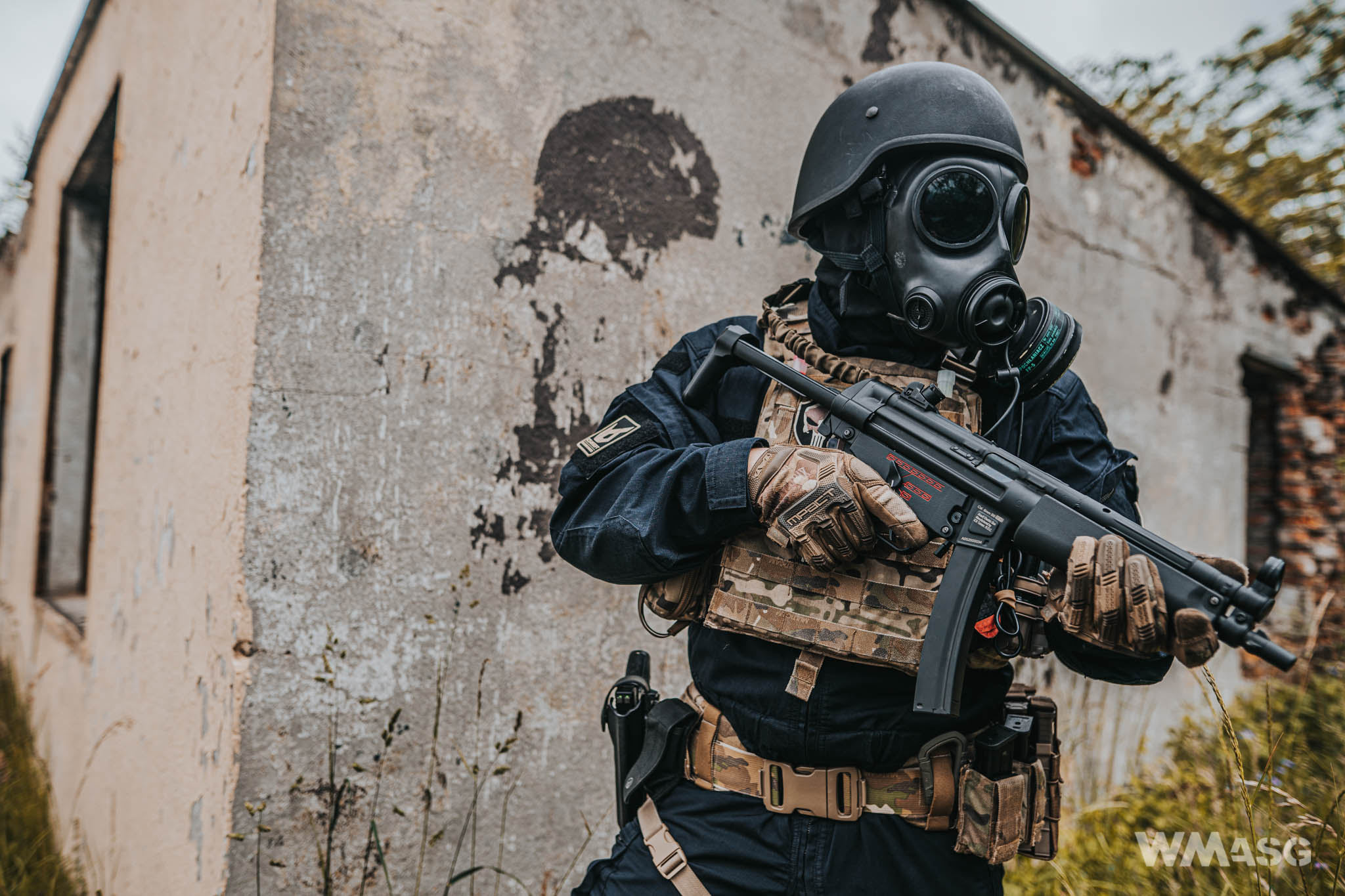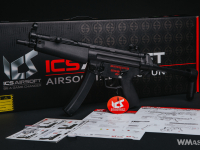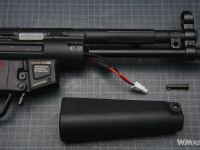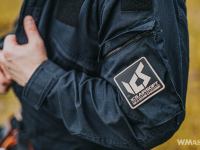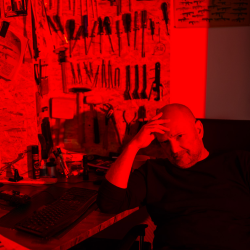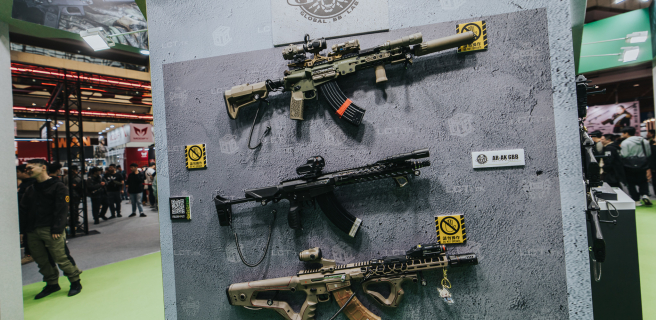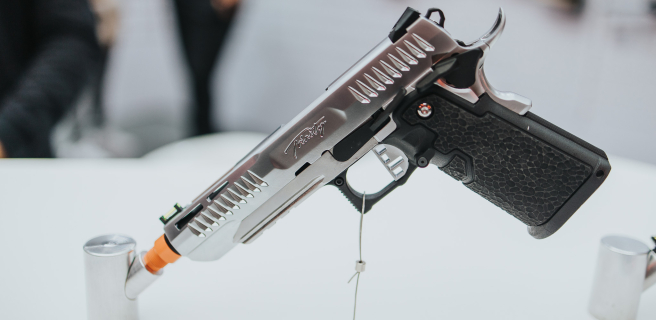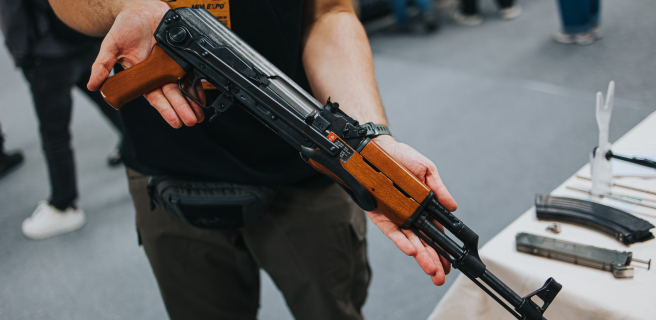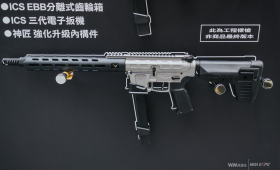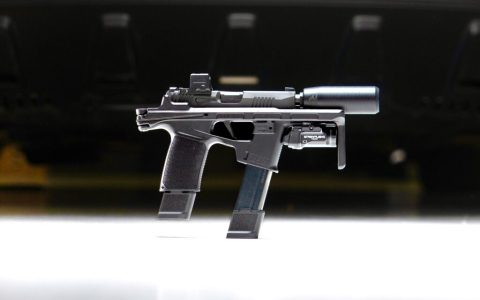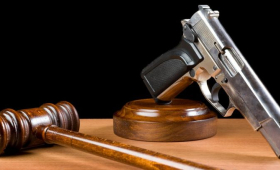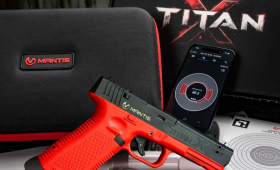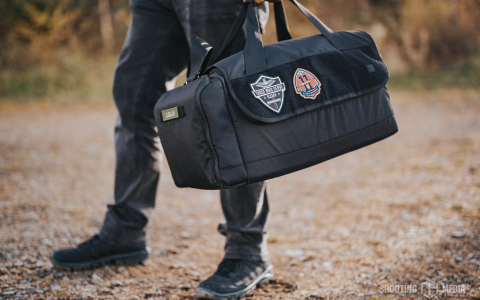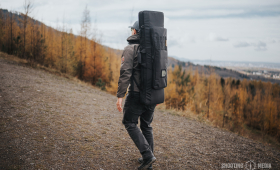ICS has always been making MP5 replicas. The editor-in-chief bought his, probably in 2002 and the same one is still hanging on the wall in the editorial office. Over the years, ICS replicas were significantly different from those of other manufacturers. For example, the method of disassembly was very helpful as it was not necessary to disassemble the receiver. The gearbox was simply sliding backwards together with the pistol grip. Other manufacturers copied this solution many years later.
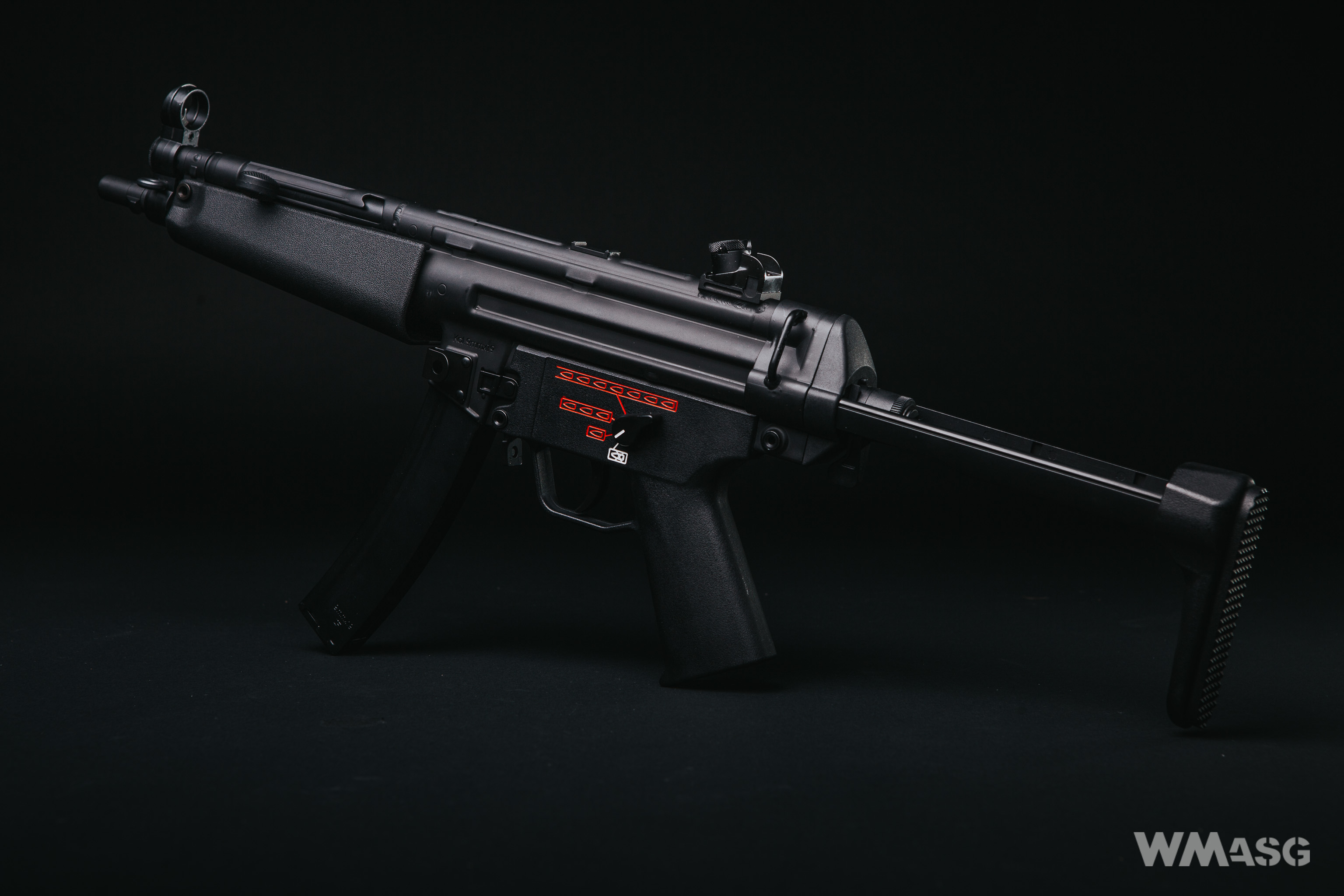
Currently, the ICS offer includes six MP5 models: the classic A4 and A5 with a fixed and collapsible stocks, equally iconic, suppressed SD5 and SD6 versions also differing in stocks, and the new CES-P A5 S3 and CES-P MS1 S3. 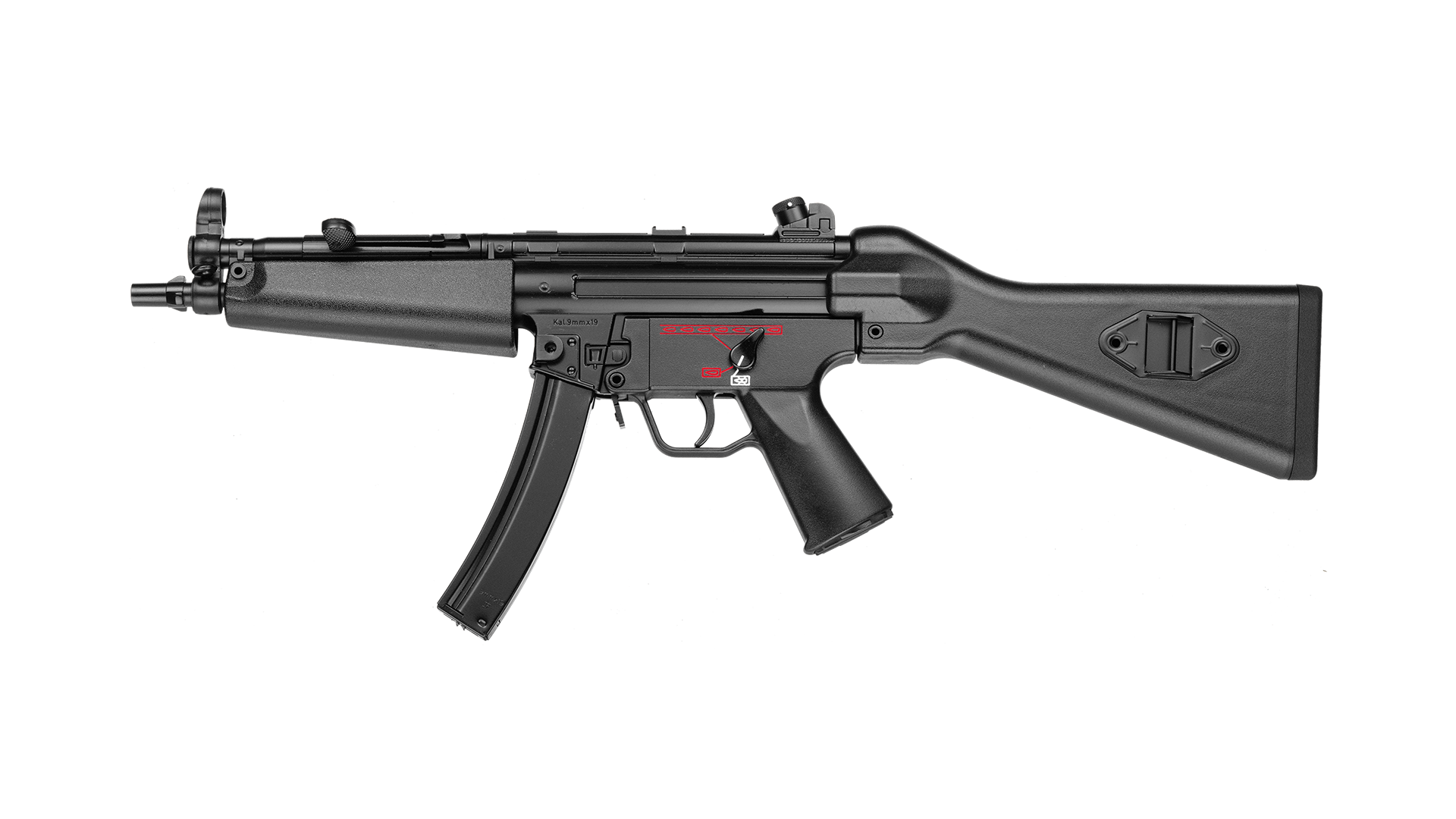
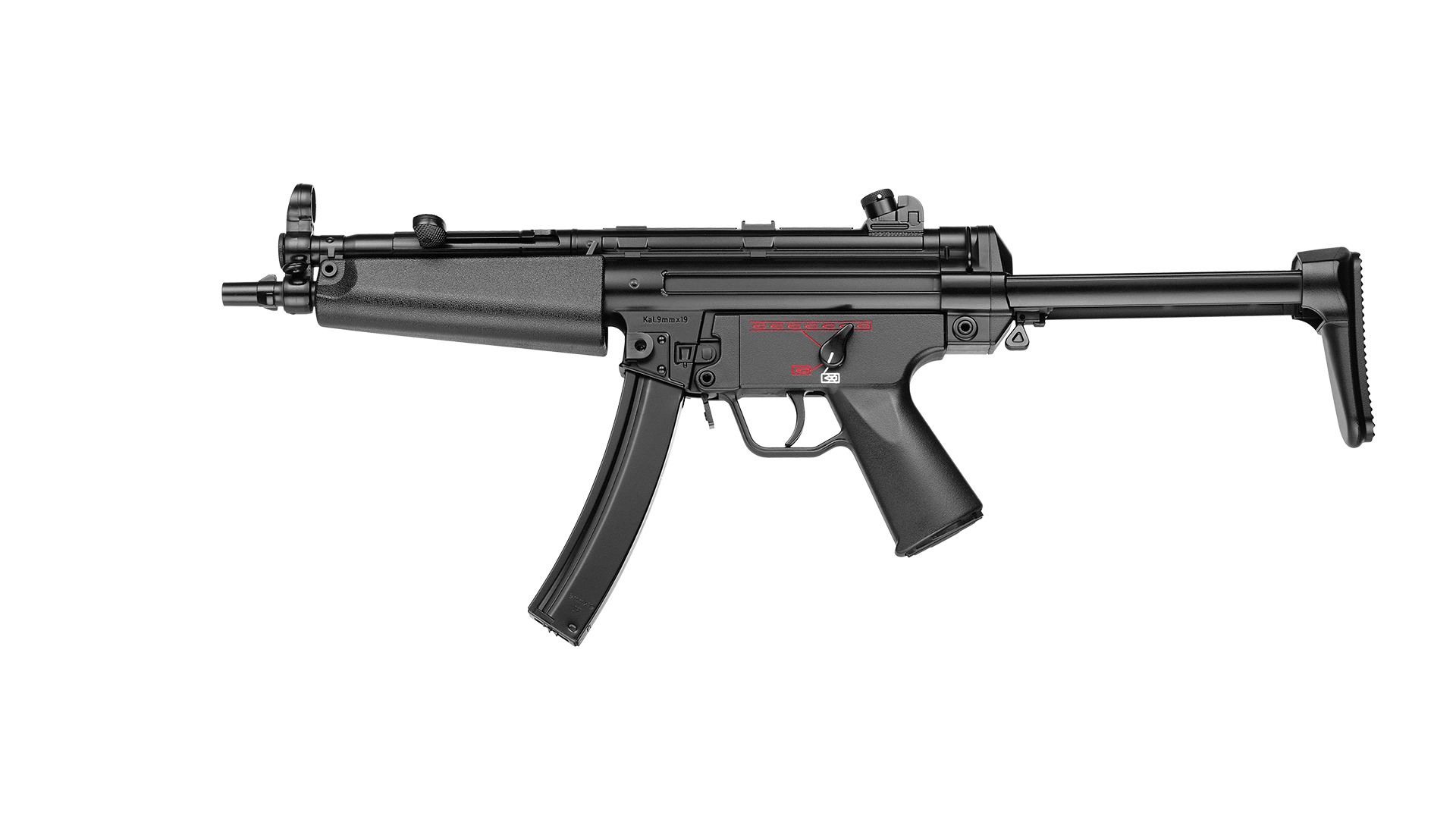
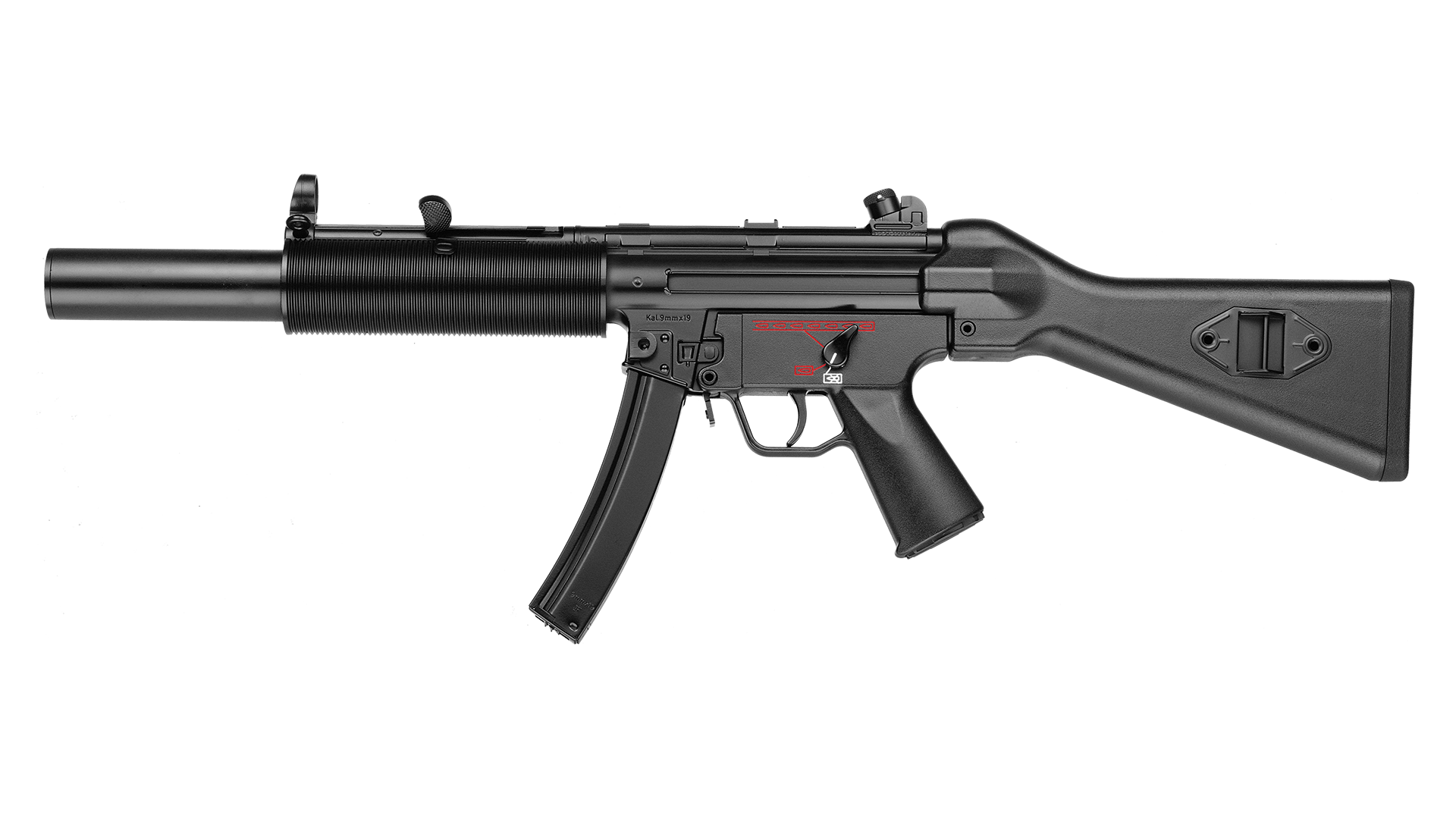
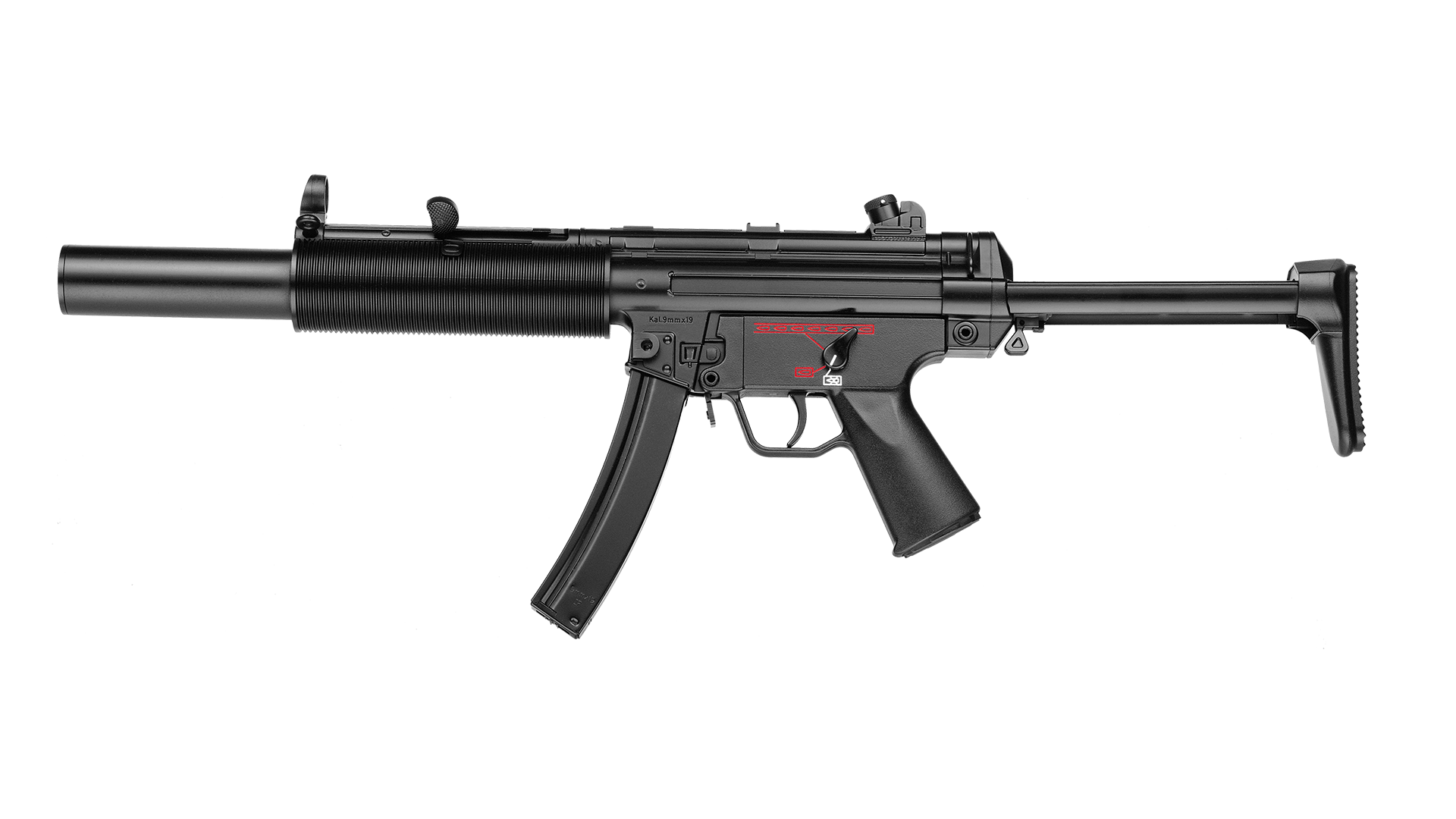
Until recently, the budget A4 Lightway versions, with a plastic receiver was also available, but it is no longer produced. The currently made CES-P A5 S3 model is technically identical to the MS1 S3 and both were presented quite recently. However, these are not entirely new replicas as very similar replicas have already been made. The new versions differ in the use of the latest generation S3 electronic control system.
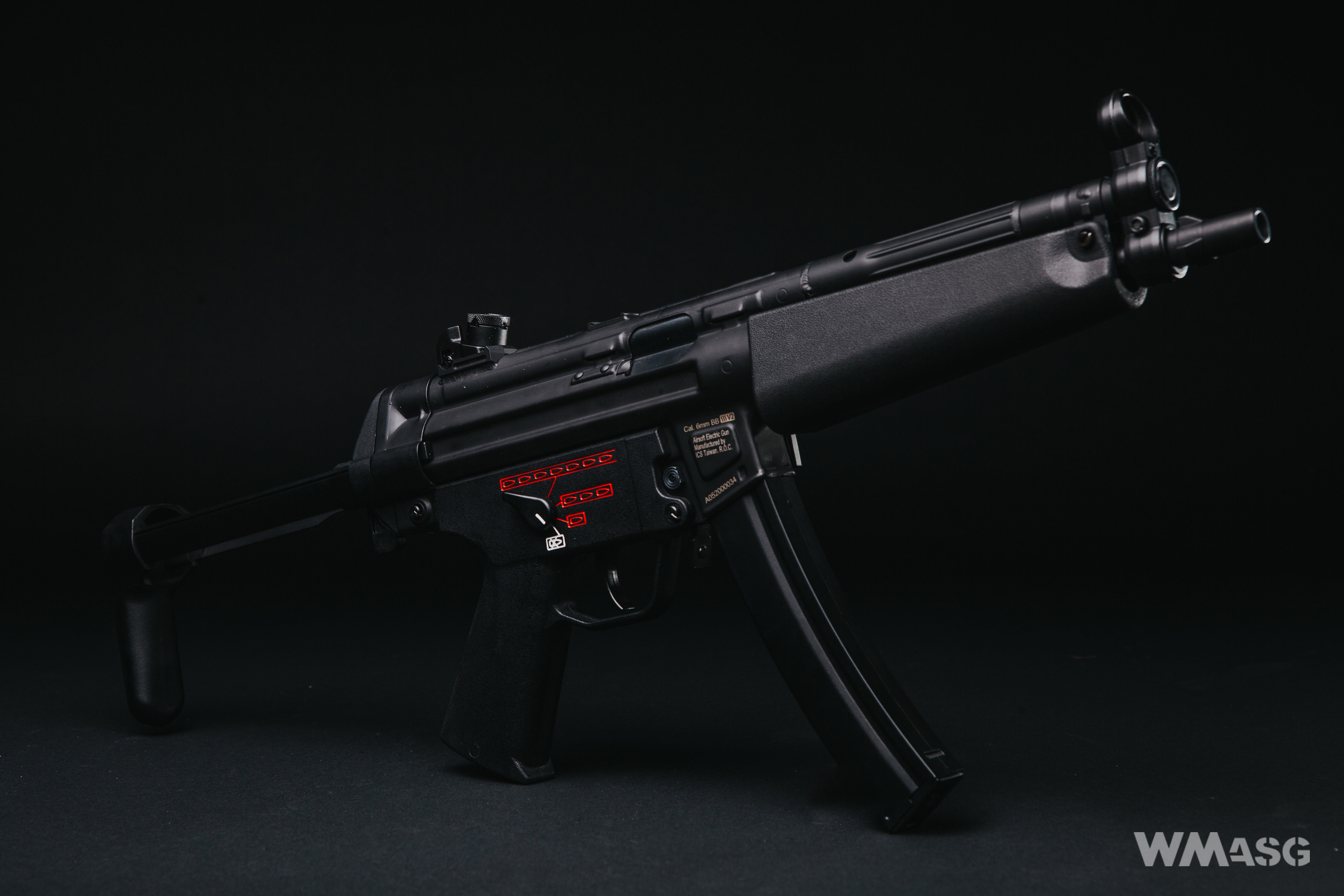
What is the difference between the CES and the CES-P lines? There are in fact many differences. First of all they are completely different designs, although both are quite faithfully made replicas of the MP5 submachine gun. The "normal" CES are a little old school as they have been produced in virtually unchanged form for almost 20 years. They have cast receivers made of ZnAl alloy, old-style Hop-Up chambers with adjustment placed on the left side, at the connection point of the receiver and the handguard and standard V2 gearboxes.
The CES-P is a newer generation. The receivers are made of stamped steel sheets, the Hop-Up chamber is made of ZnAl and the adjustment is done with a slider, which is accessed after opening the ejection port. The CES-P is driven by the ICS flagship gearbox: a two-piece V2 frame (split gearbox).
Obviously, the method of disassembling replicas of both series is completely different, and the number of compatible external parts is small.
For comparison: the ZnAl receiver of the CES line: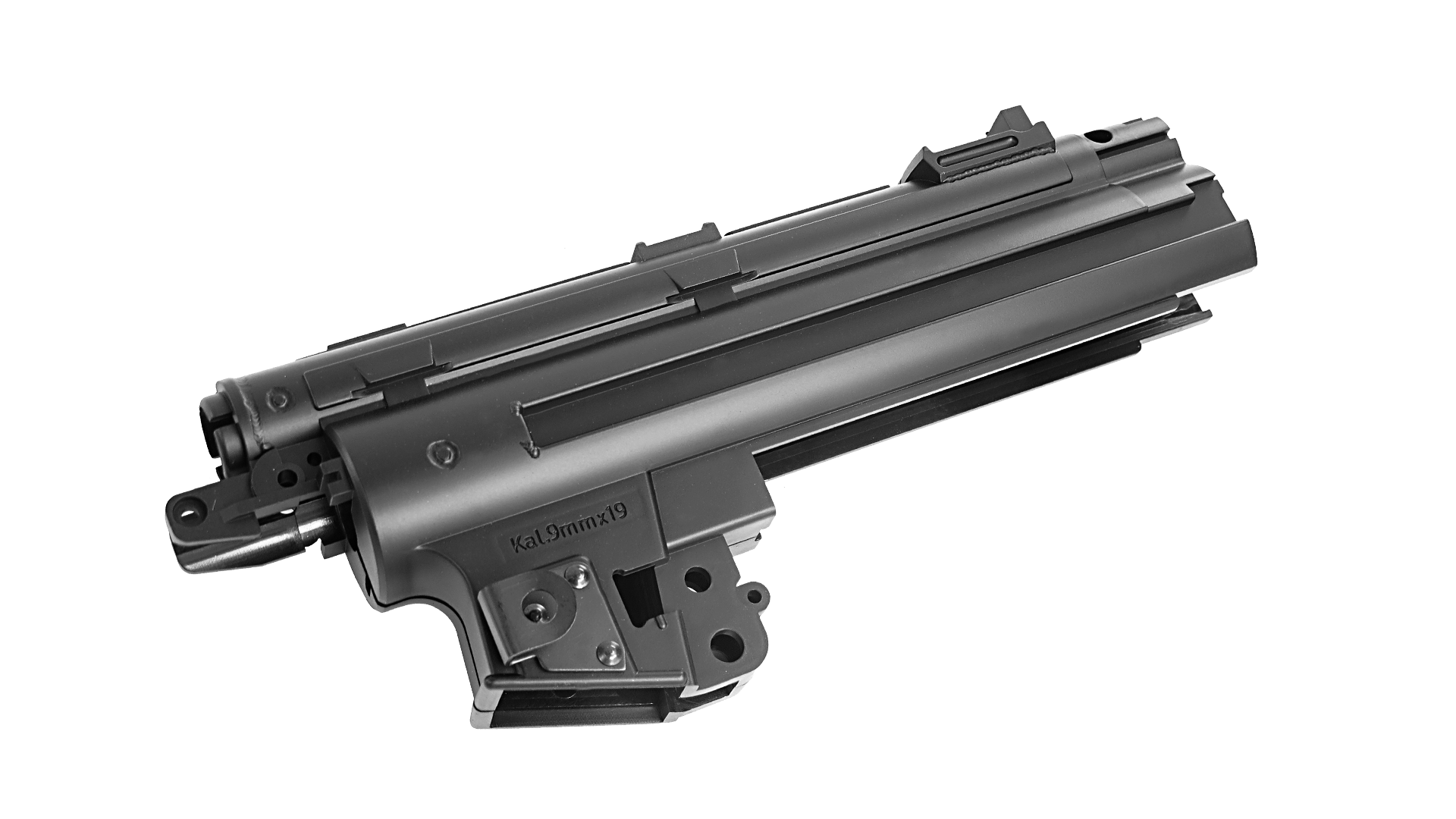
And the steel one from the CES-P line:
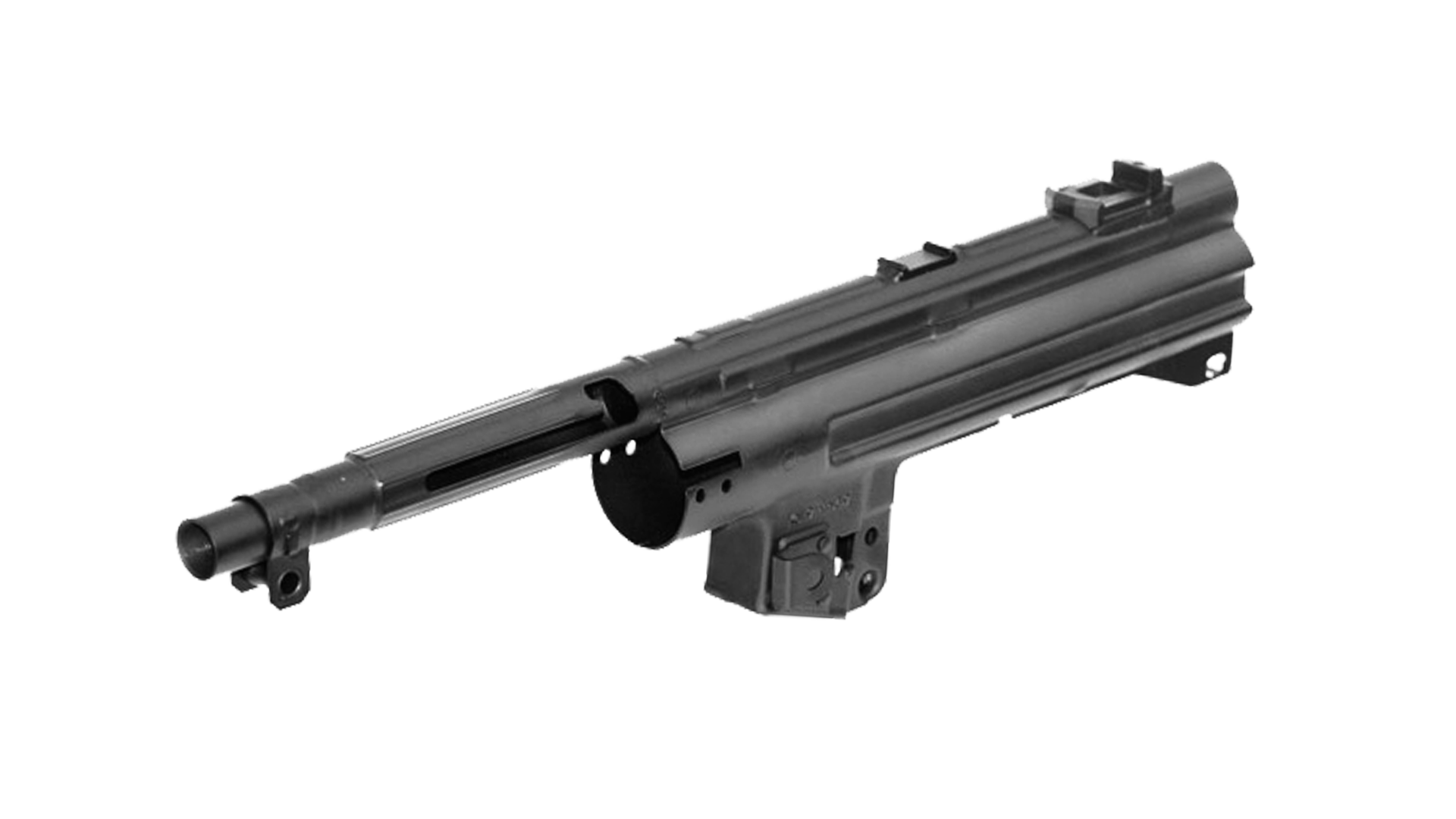
The CES-P A5 S3
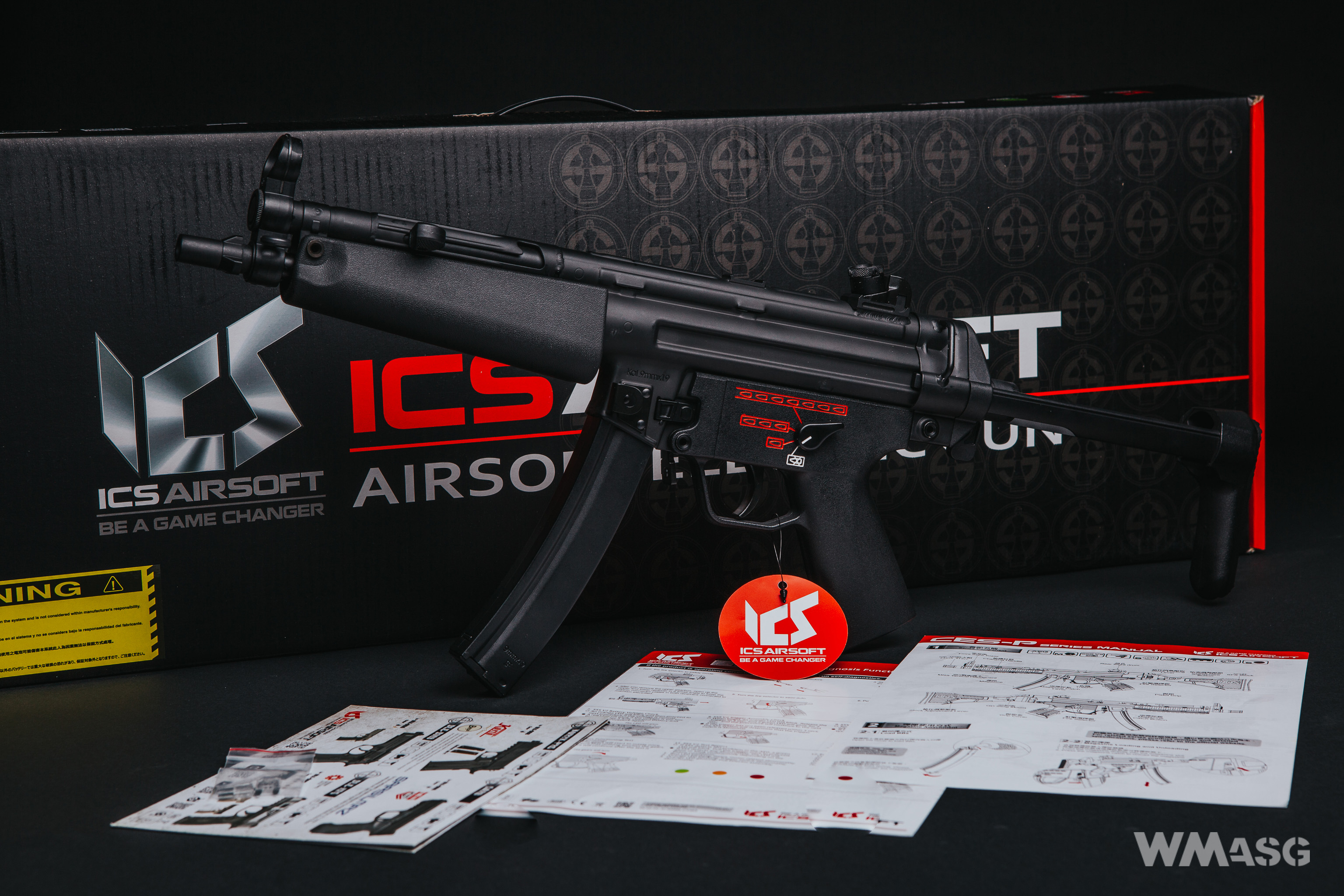
Basic technical parameters:
- overall length: 500/650 mm (collapsed/extended stock);
- inner barrel length: 230 mm;
- weight: 2600 g;
- magazine capacity: 230 BBs (hicap);
- muzzle velocity: 400 fps.
Together the replica, we only receive an extensive user's manual.
The most important functional features:
- an electronic control system (SSS E-Trigger);
- a 3-round burst mode, apart from the single and full-auto firing modes;
- a short stroke trigger;
- a precocking function (shooting from a retracted piston);
- a quick spring change system;
- a spring release feature.
As we already mentioned in the introduction, the replica's receiver is made of stamped steel sheet. Other steel parts are the mount of the stock, the dummy bolt carrier and three main pins - the one securing the stock, the one securing the handguard and the one connecting the trigger housing with the receiver. And basically that's it. Except for some other minor parts the other ones made of metal are made of ZnAl alloy.
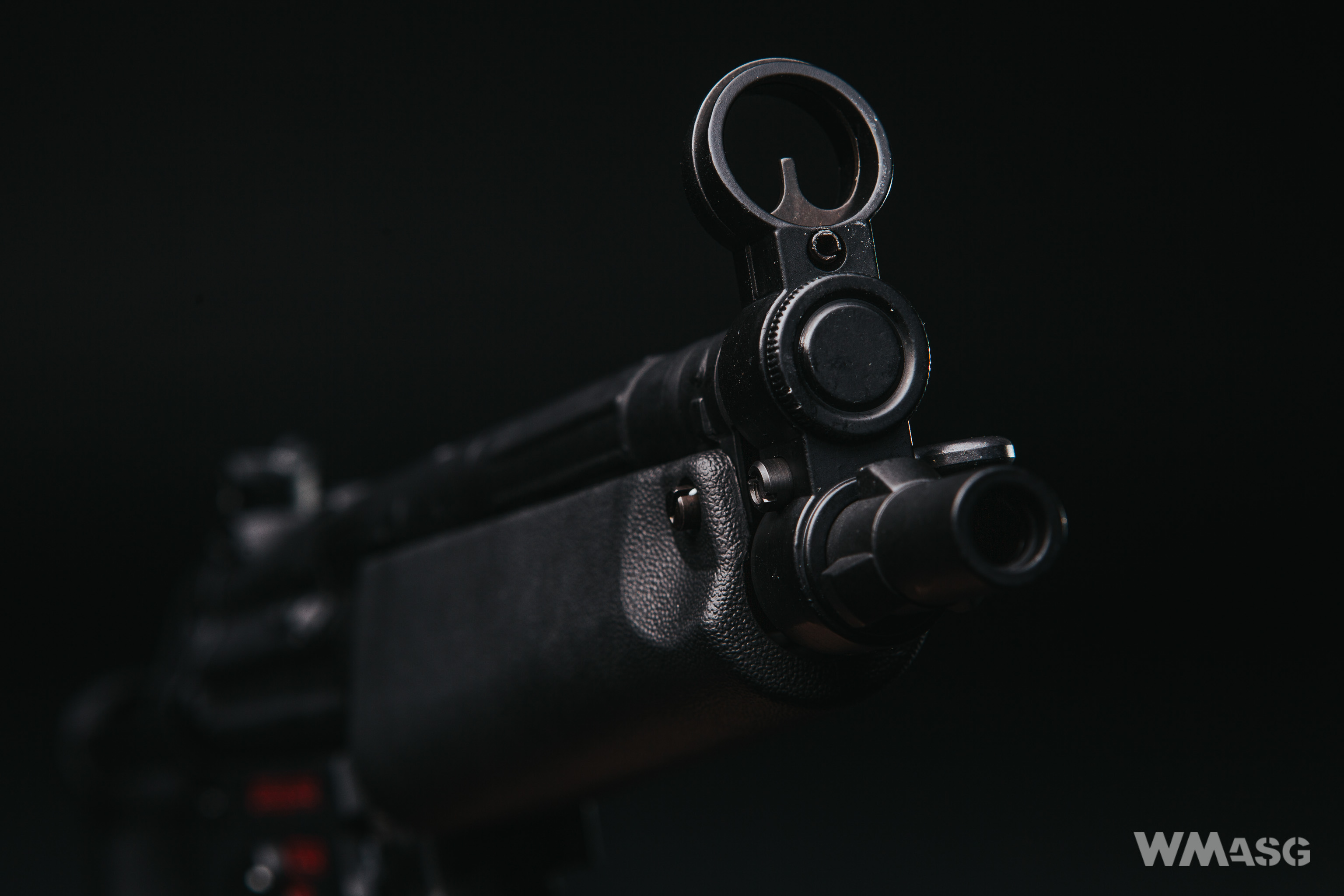
The sights
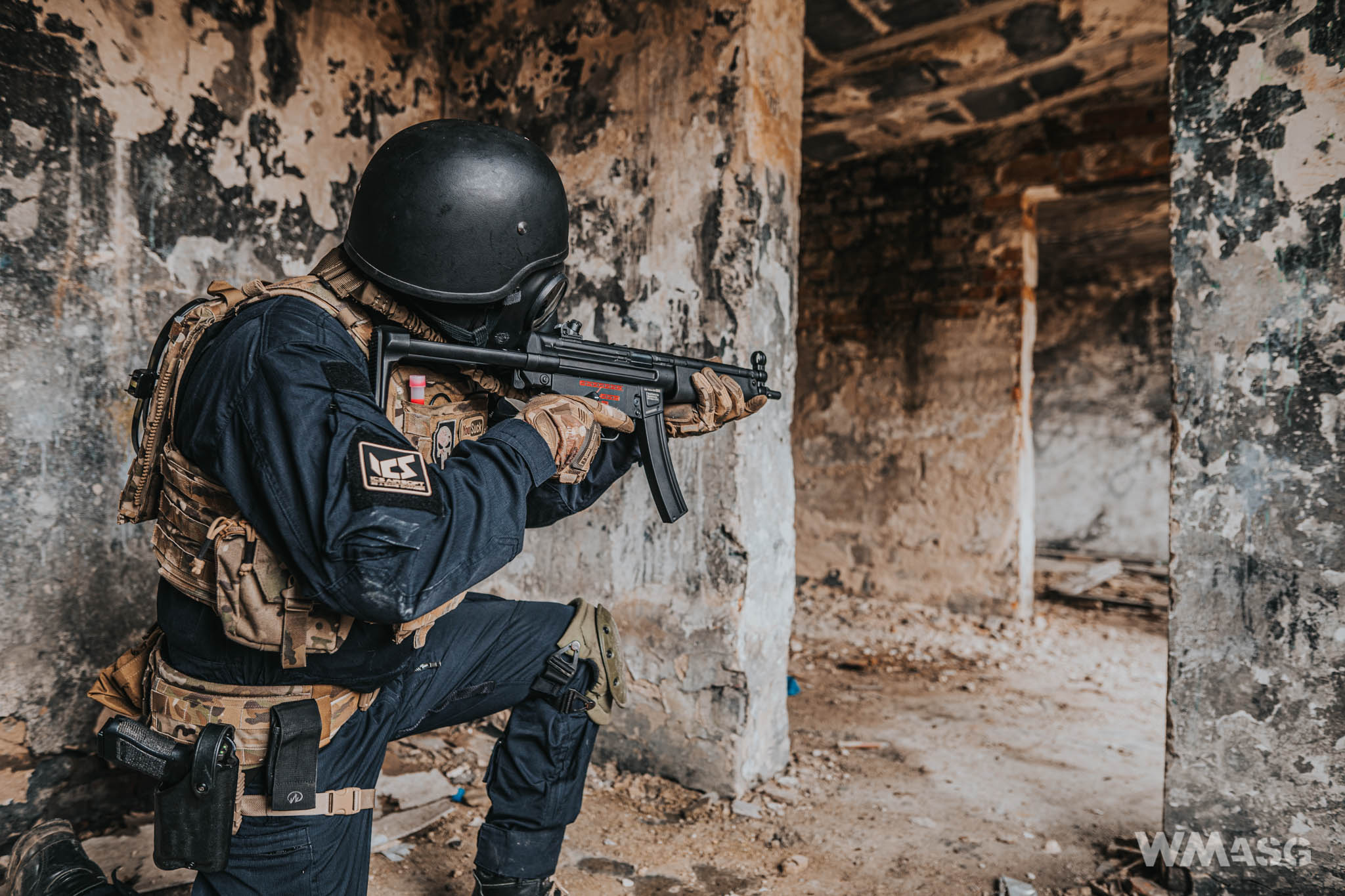
The replica has sights typical of an MP5 - a fixed front sight inside a round ring and a rotating diopter drum rear sight with four settings, which in the original is scaled for shooting at 25, 50, 75 an 100 meters. After loosening the top screw, the rear sight can be adjusted horizontally with the adjustment screw placed on the right. The first setting is not a closed aperture but rather a typical rear sight notch. Unfortunately, in the tested copy, when using this setting something was wrong with the aiming line as the opposite edge of the drum obscures a significant part of the front sight and, as a result, proper aiming was difficult. Other settings did not have such problems. The replica has the same diameters, but the optical axes are at different heights. The sights are made mostly of ZnAl. Only the front sight itself is a piece of steel placed in a ZnAl ring.
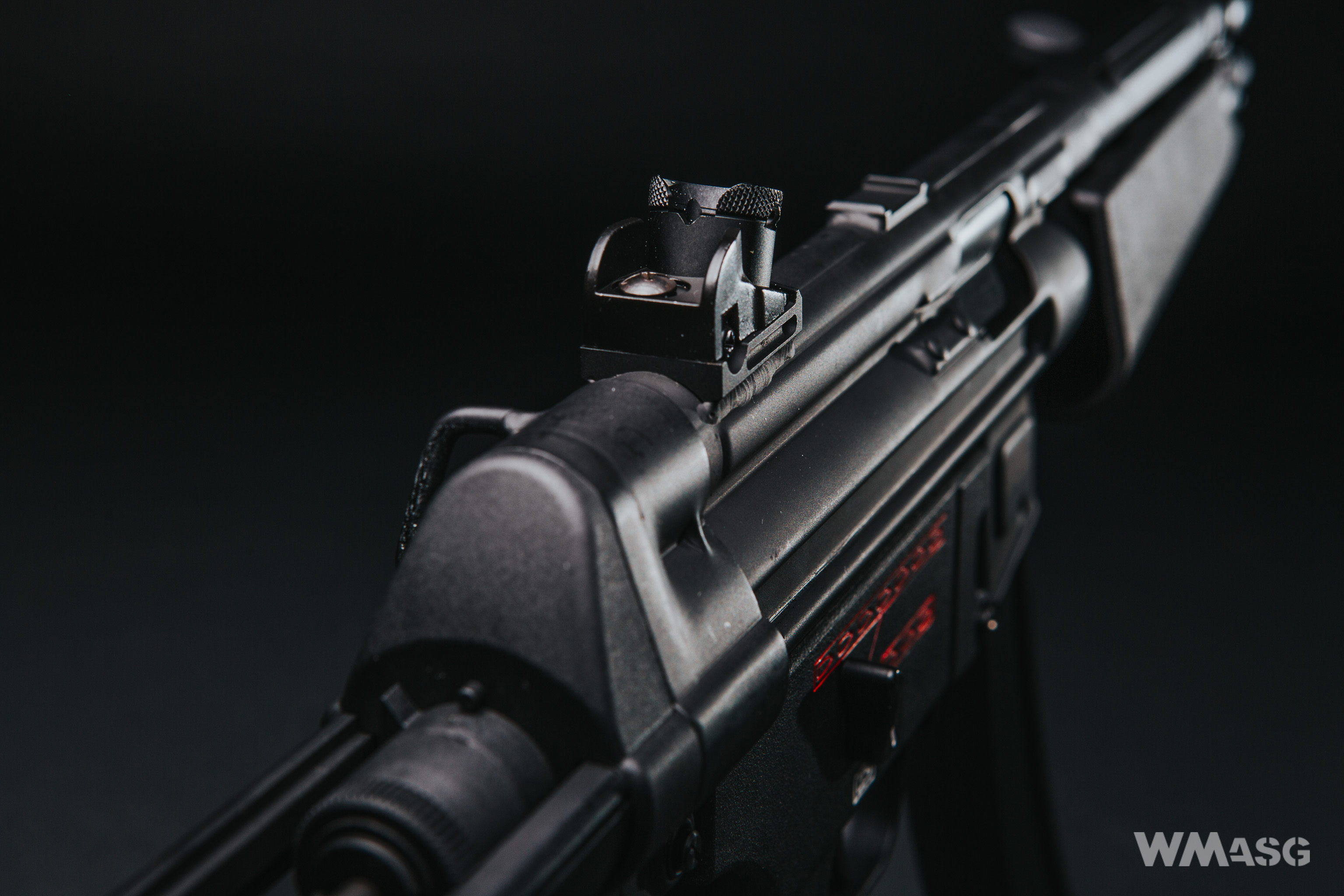
There are 2 parts in the front sight ring that important for the replica. The first one is, fortunately, a steel swivel for attaching the carrying sling. This part is mounted in a typical way, with a locking nut at the other end. The second part is a ZnAl flash hider, which is not screwed in, but pressed into a socket and protected from the bottom by a single Allen setting screw. There is no thread on the hider, which is a bit of a problem for people who want to mount a silencer. ICS offer includes an accessory adapter that solves this problem, but it must be purchased separately.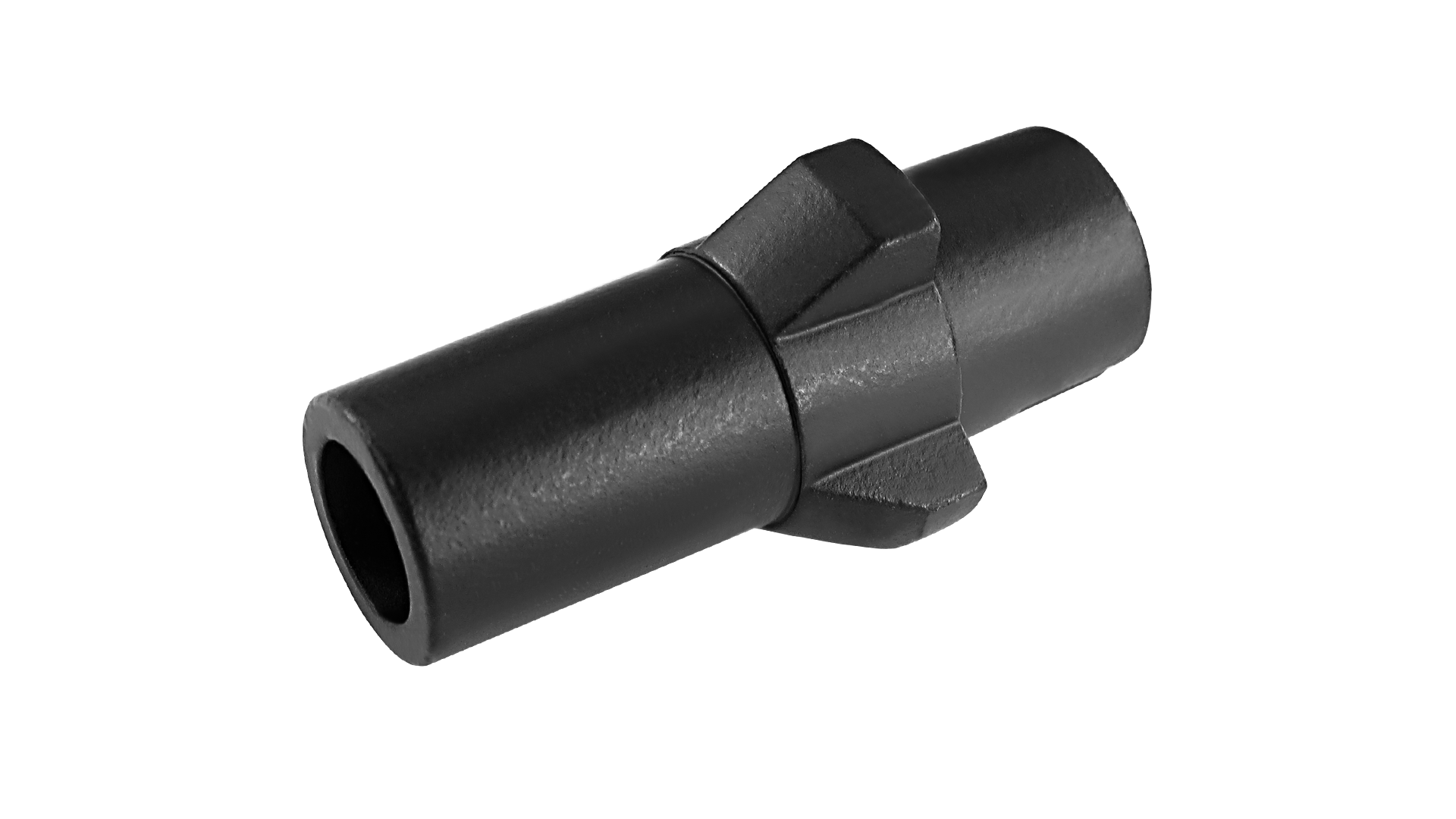
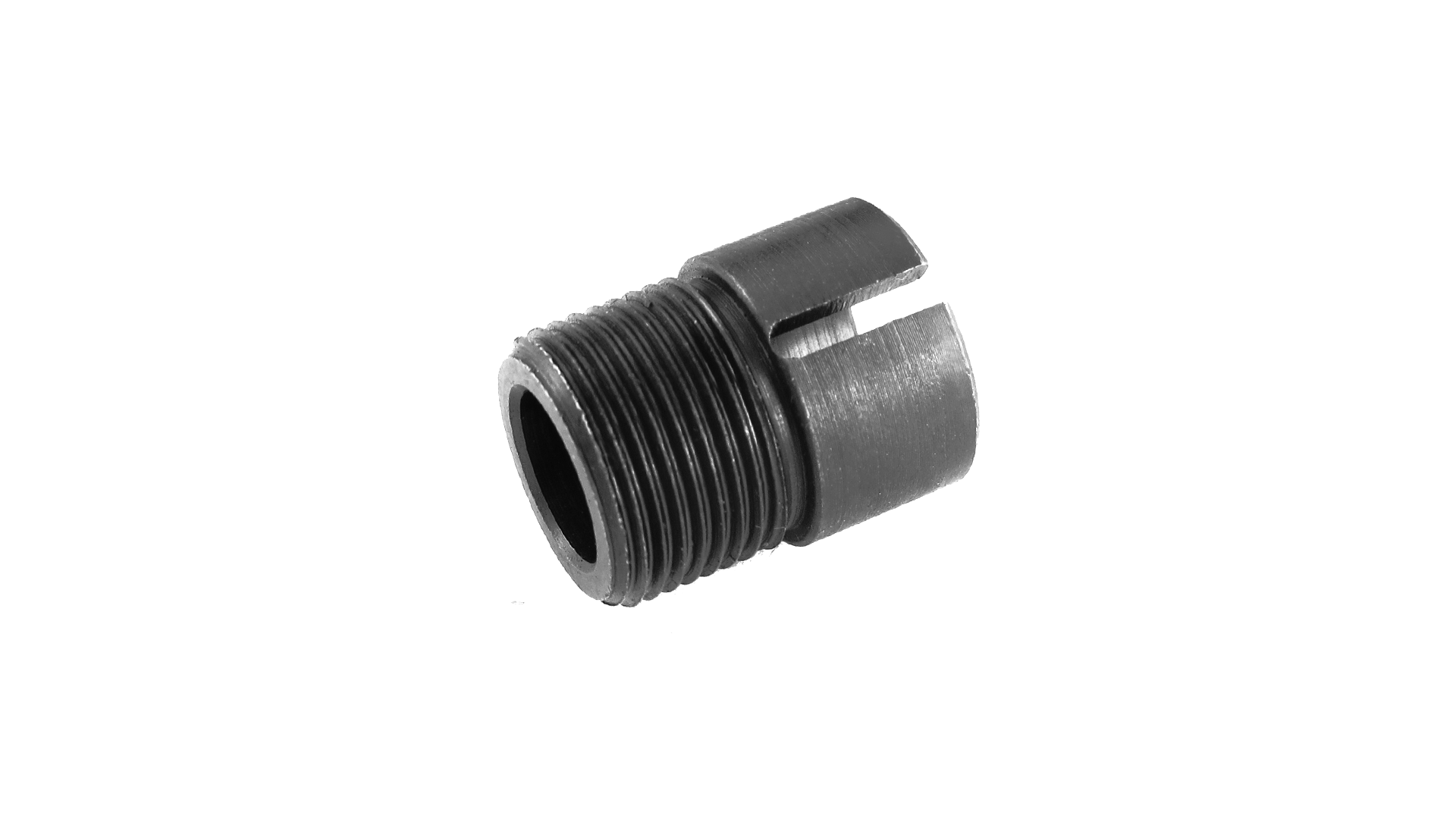
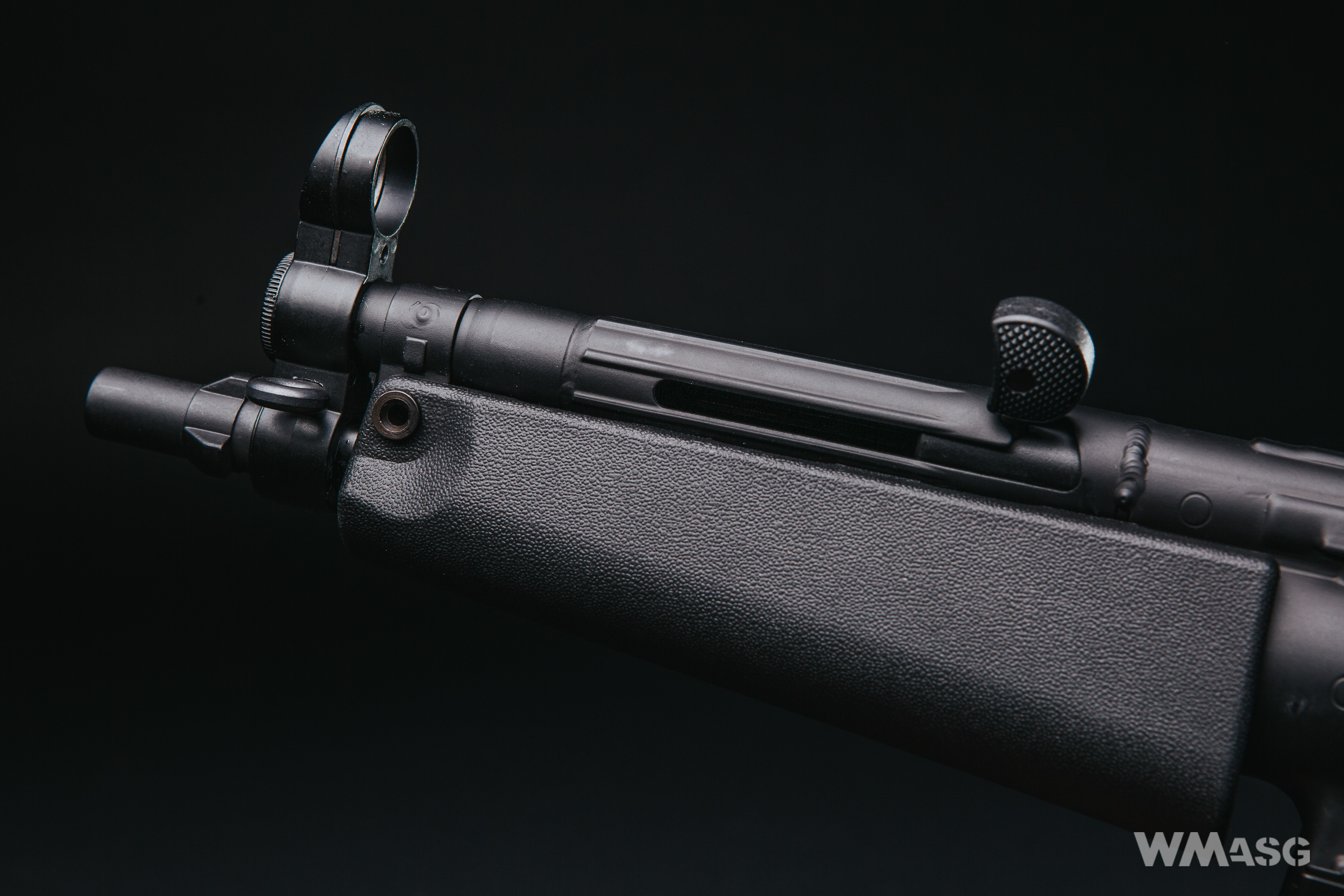
The pin securing the handguard, like the other pins, is made of steel and, like the others, has a spring that keeps it in place . This is the shortest of the pins. The other two are longer but of equal length. A piece of advice resulting from my personal experience - insert pins into the sockets from the side of the replica that has contact with the users body (for right-handed people that would be the left side of the replica). In this way you will reduce the risk of the pins being pressed out by accident.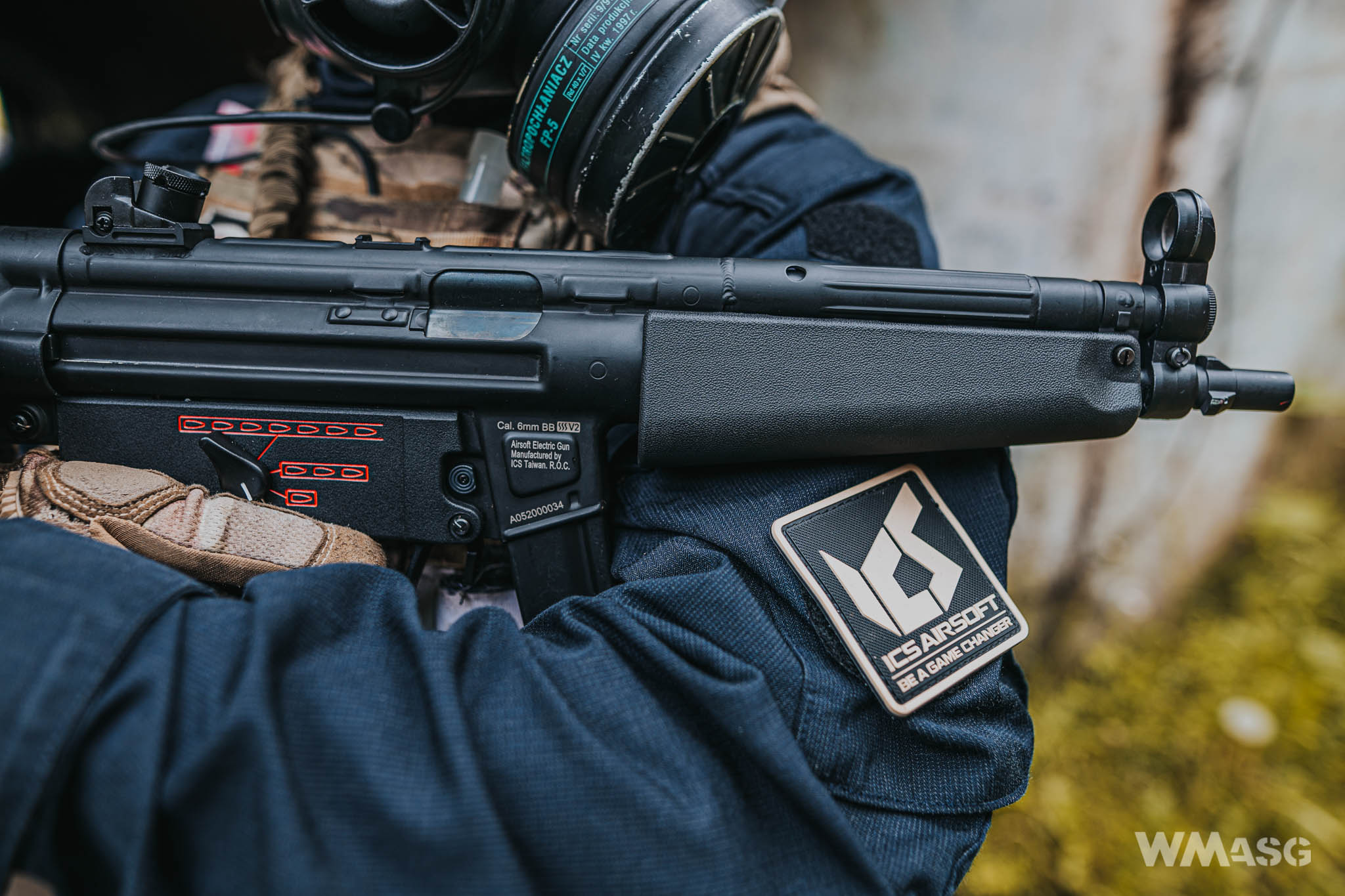
The handguard itself is made of thick, rough and hard plastic. Unlike many other replicas, the one in the MP5 fits very tightly, it doesn't have the slightest slack. This is due to additional guides located on the inside that slide into the dedicated grooves in the receiver. Inside there is space for a battery. A modular LiPo battery with a capacity of up to 1300-1400 mAh with a mini Tamiya plug will work best.
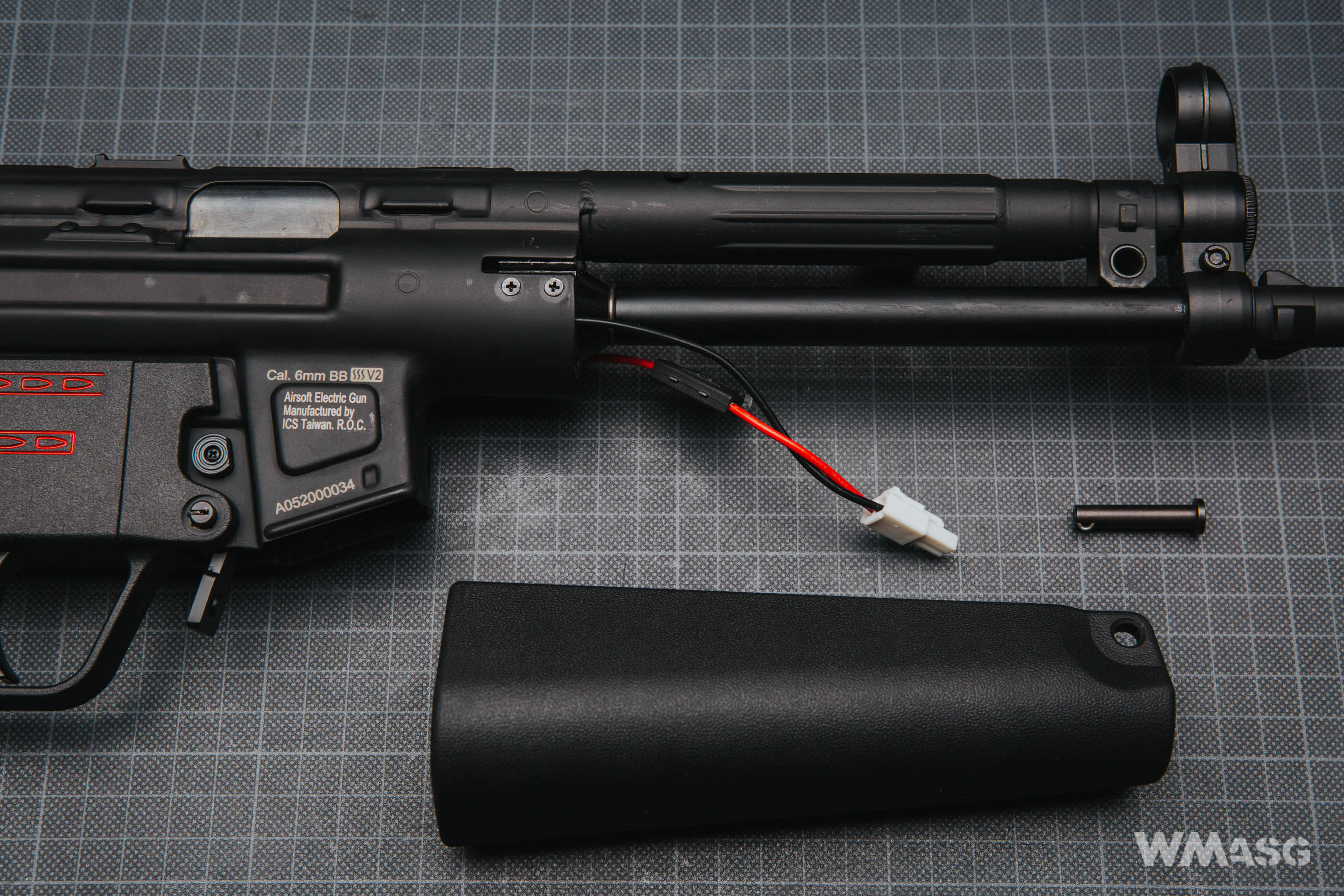
The steel housing of the charging handle mechanism is an integral part of the receiver. This is one of the differences between the older CES replicas and the reviewed CES-P. Unfortunately, the charging handle itself is made for ZnAl therefore energetic releasing of the handle into its rest position will probably sooner or later result in damage done to the handle. Earlier versions had the same weak spot and as it turns out little has changed. The ICS catalog has the spare part, numbered MP-57, which is common to both models.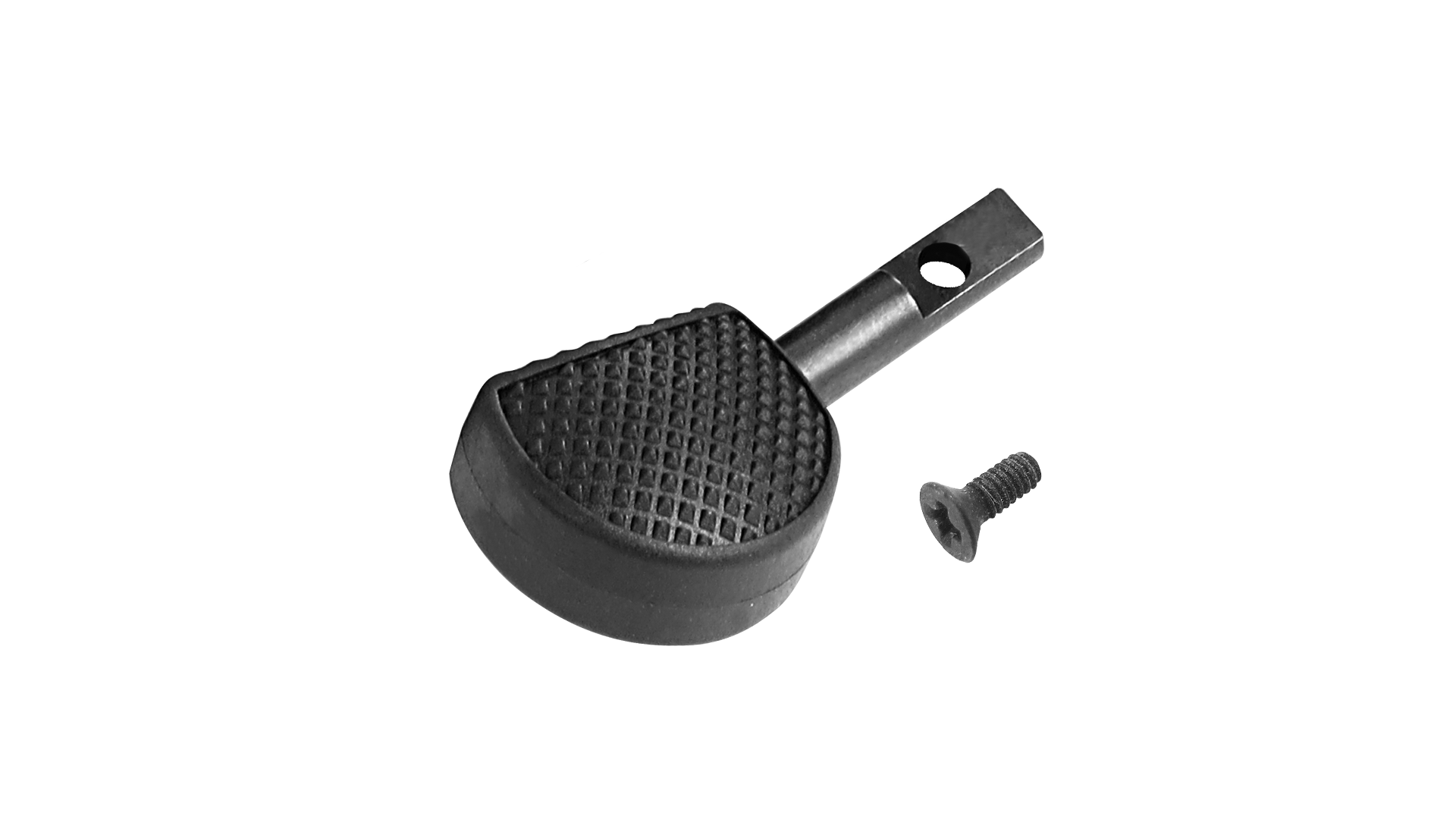
Opening the ejection port and locking the dummy bolt carrier in the rear position is nothing new. If I remember correctly, it has already appeared in the second generation of the Classic Army MP5 replicas (licensed B&T), and currently this solution is used by many more manufacturers, including Cyma. Moving the Hop-Up system adjustment to the ejection port forced the chamber itself to be redesigned.
In the new one the adjustment is done with a slider which is similar in principle to the solution used in AK replicas. In the original version, a lever connected an eccentric that was used to make adjustments. As a result the Hop-Up changed its settings over time.
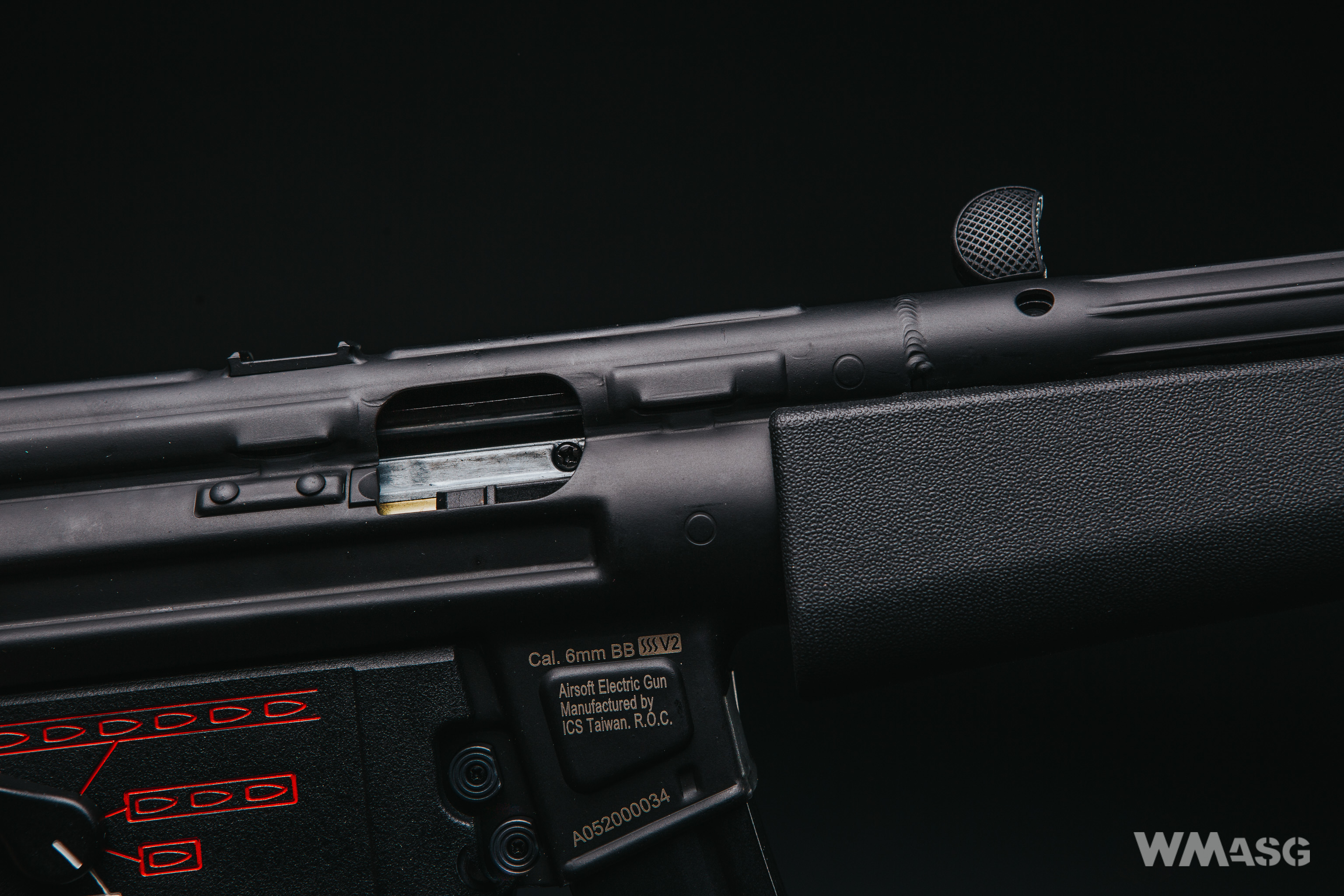
In the immediate vicinity of the ejection port, there are latches to which one can attach accessory mounting rails. In the CES-P, the latches formed from the metal sheet from which the receiver itself is made. This results in them having holes on their bottom sides that do not occur in cast or plastic receivers.
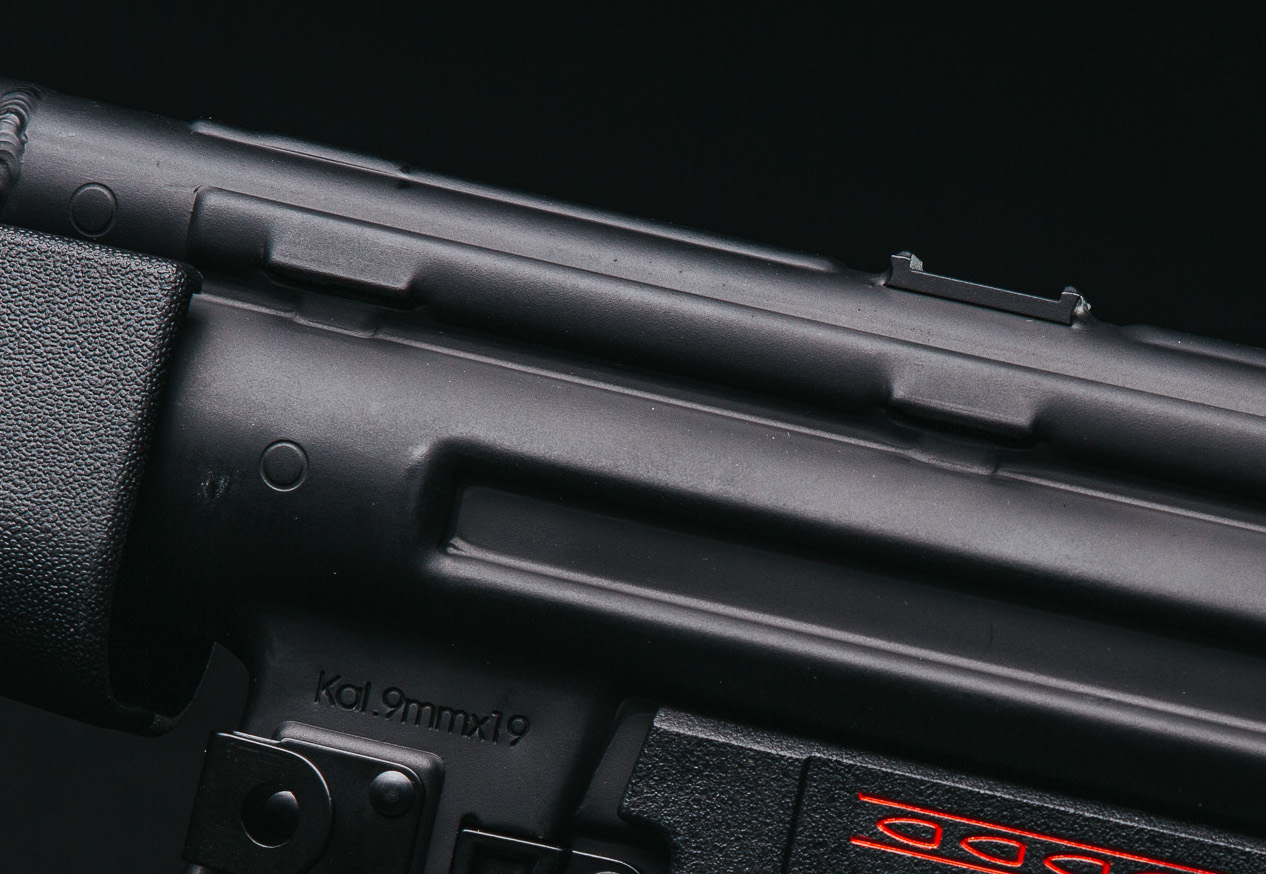
ICS currently offers 3 different accessory mounting rails.
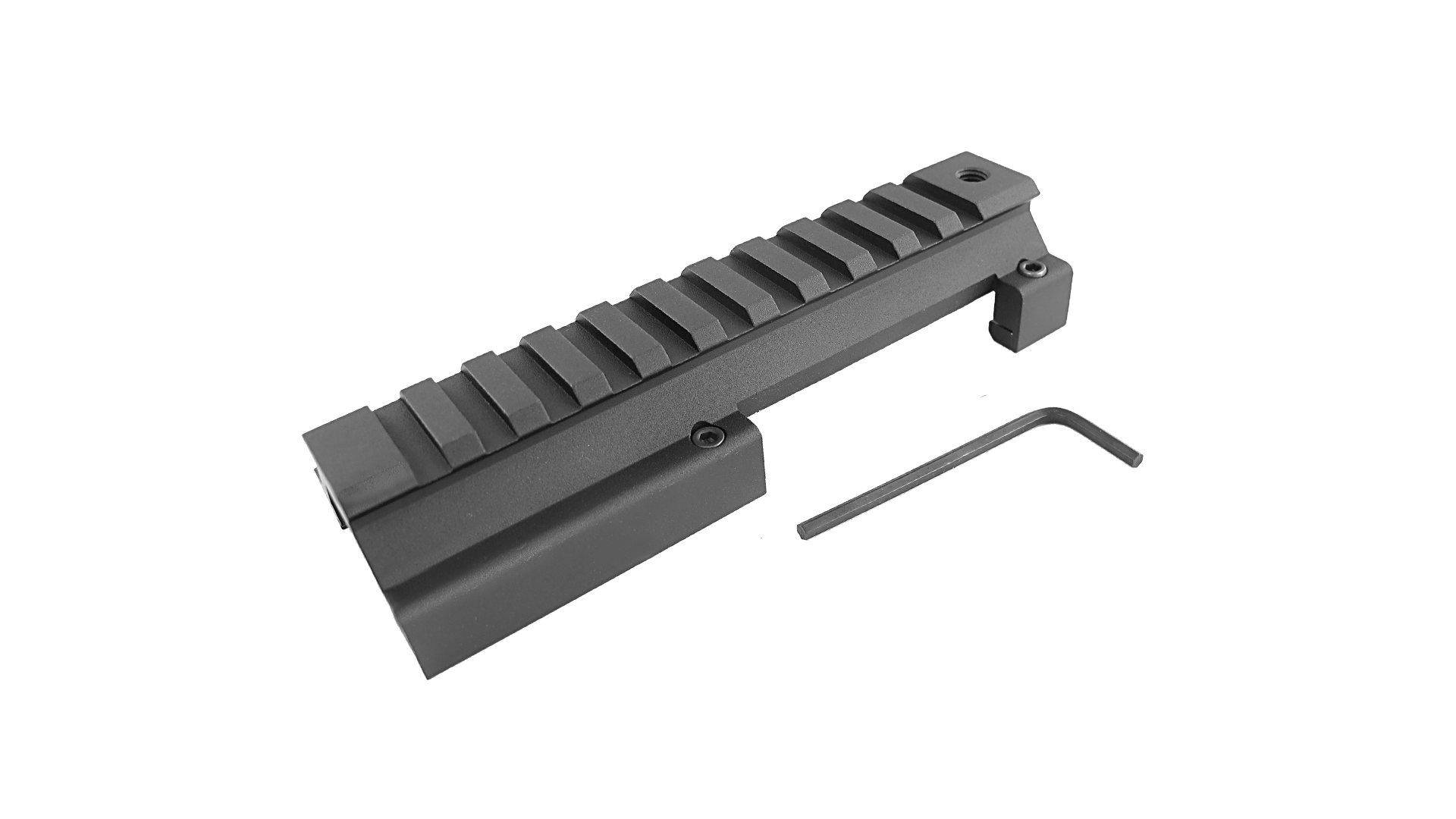
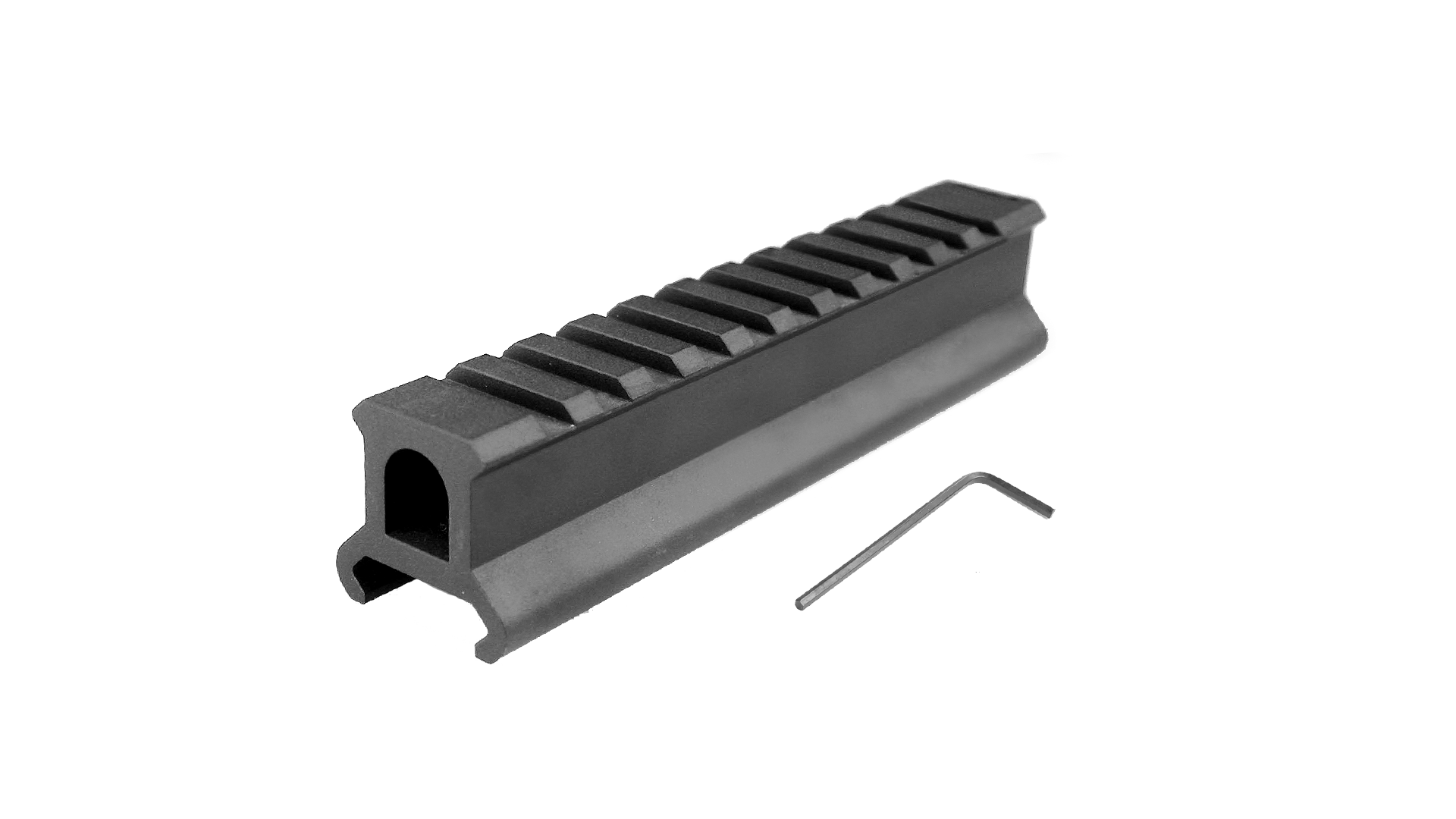
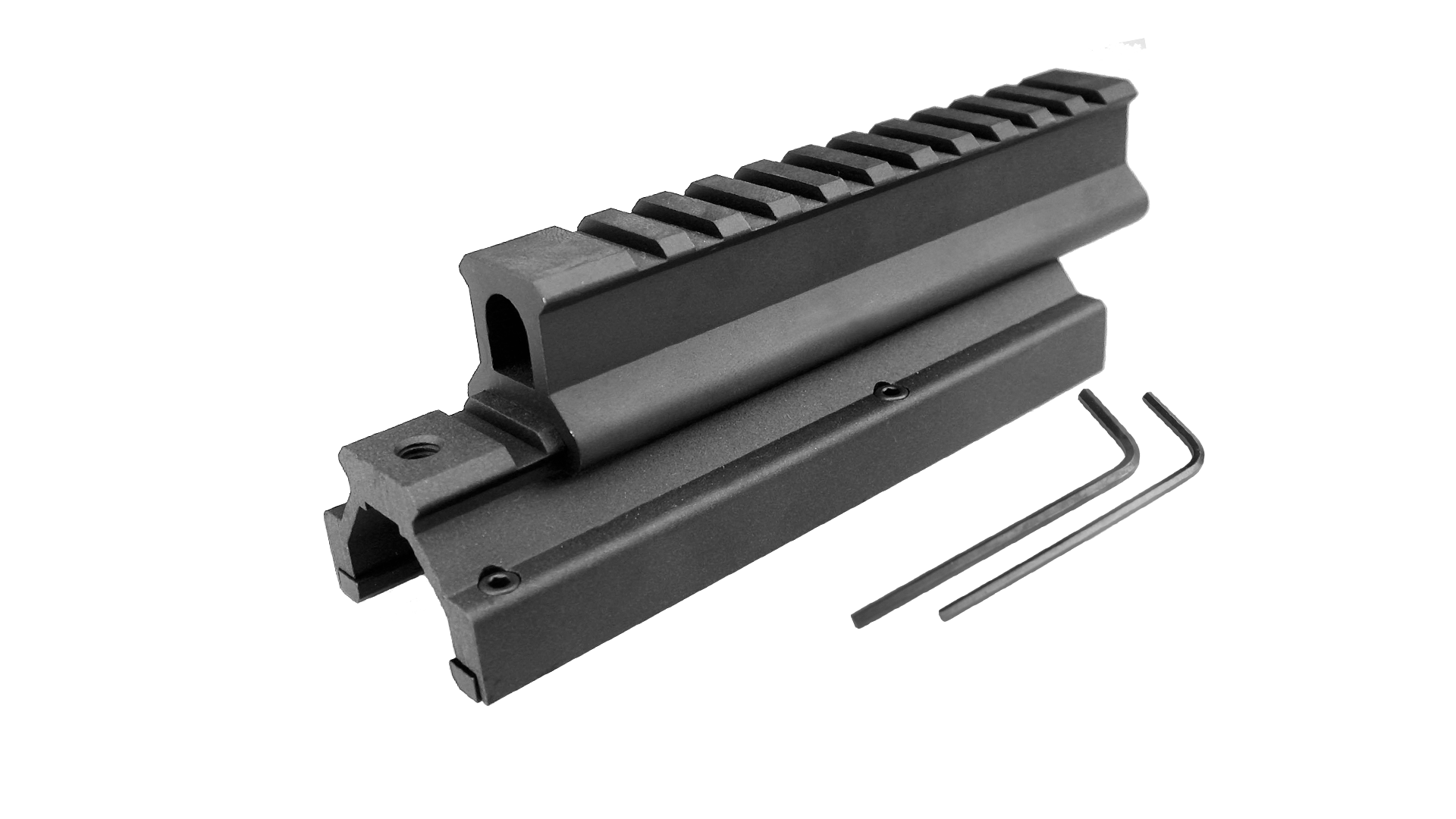
There are also more classic products, made by other manufacturers, available on the market (source: Taiwangun.com)
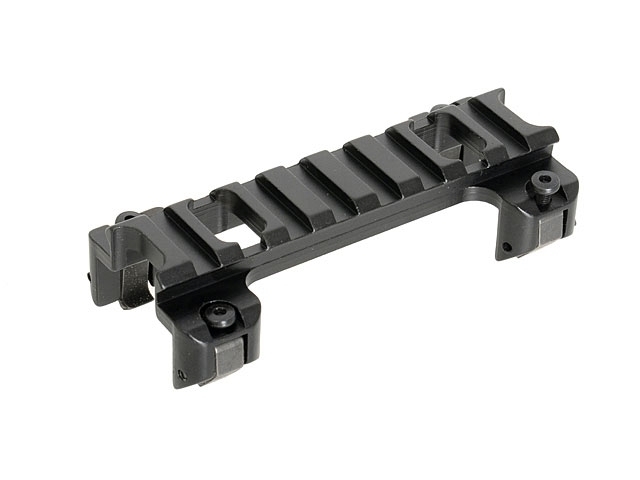
The trigger housing has pictograms showing the settings of the safety/selector switch. In addition to the SAFE position, there are 3 other: apart from the standard single fire and full-auto modes, the replica also shoots in 3-round burst. This is one of its main distinguishing features, all thanks to the use of the already mentioned second-generation E-Trigger S3 (SSS) electronic system.
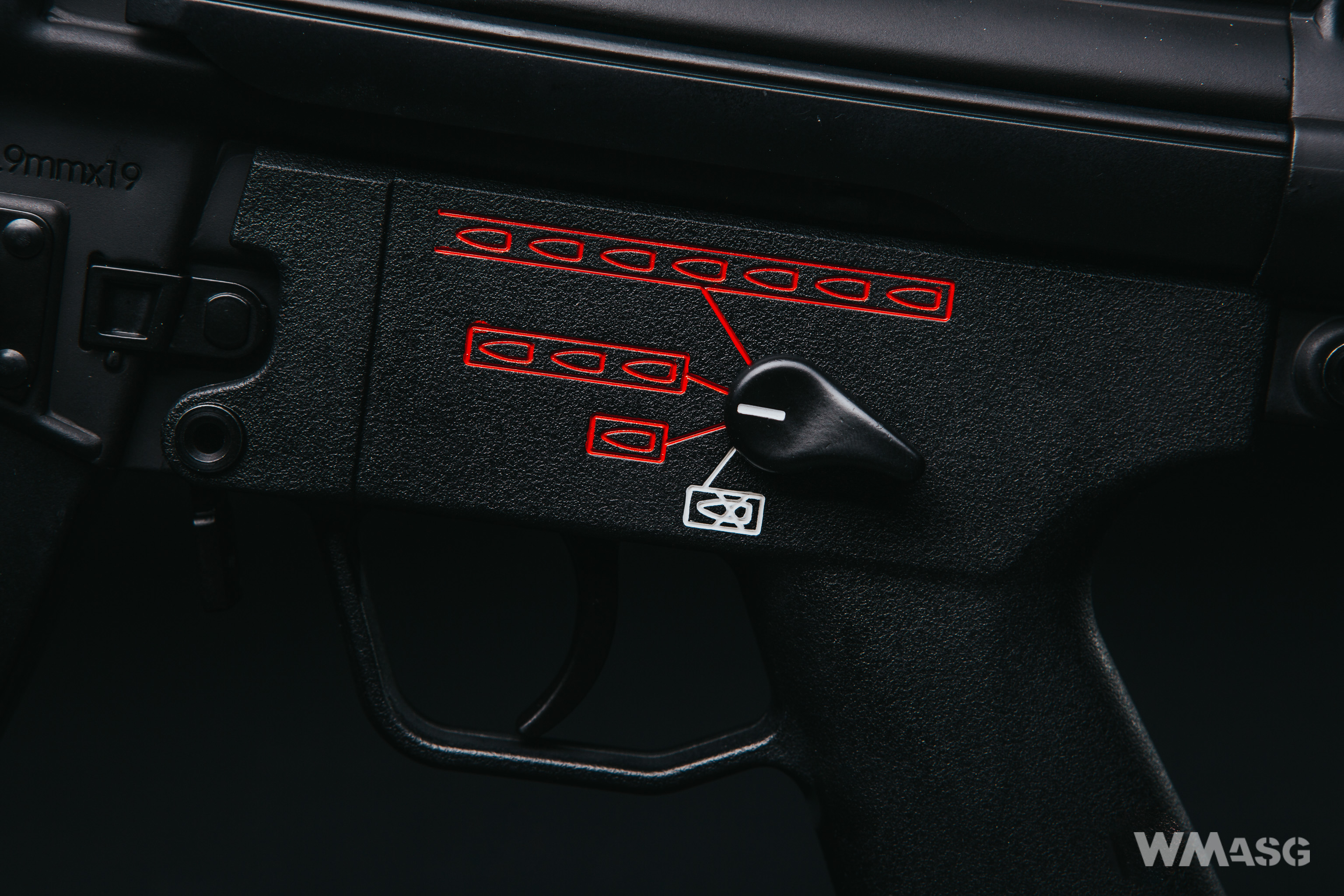
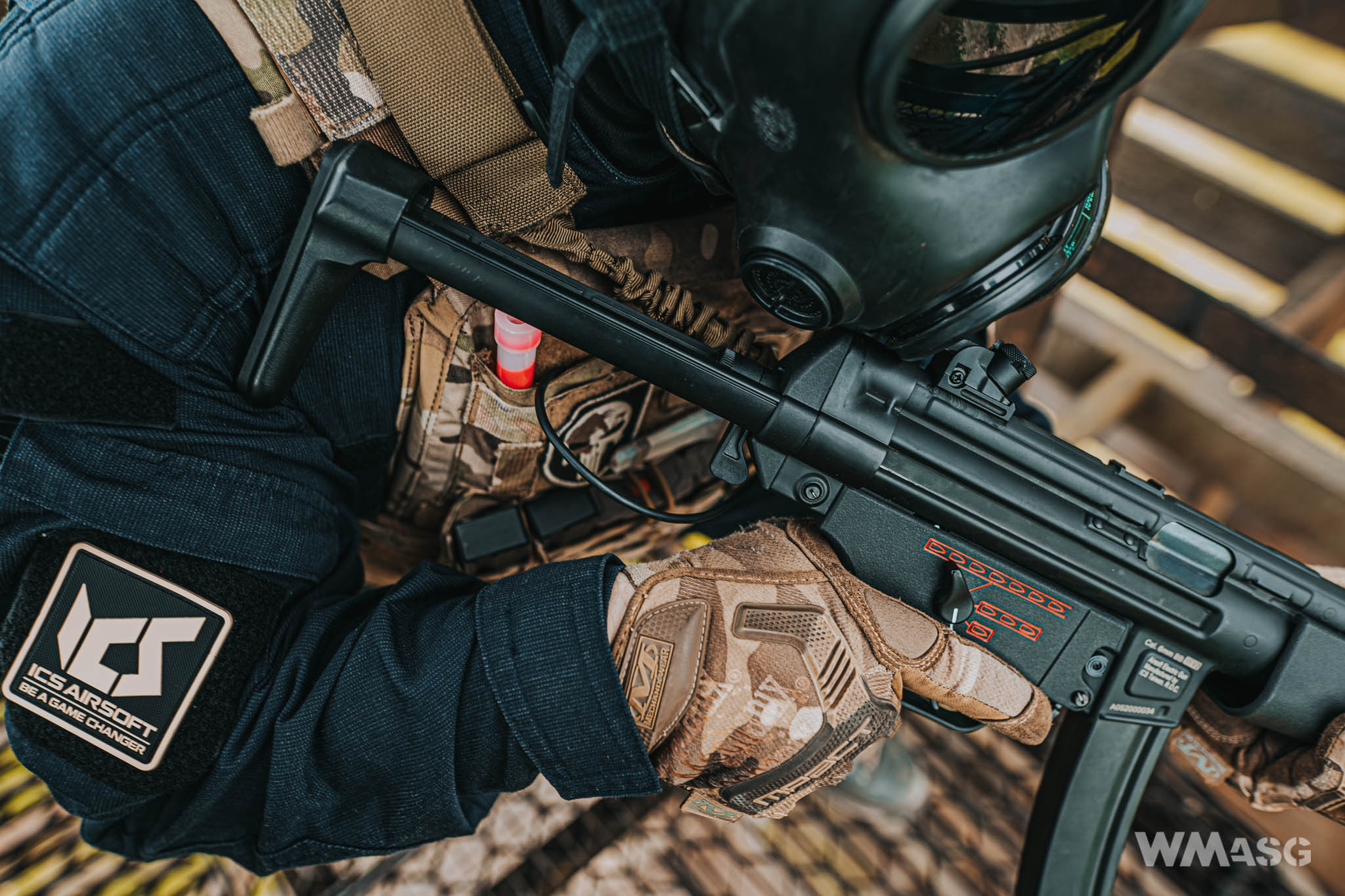
The rear part of the receiver, which also acts as a stock mount, is made of steel. The mechanism pushing the stock out of the shortest extended position is also made of steel. At this point, it should be noted that despite the use of a fairly hard spring, after releasing the lock, the mechanism ejects the stock just by a few millimeters.
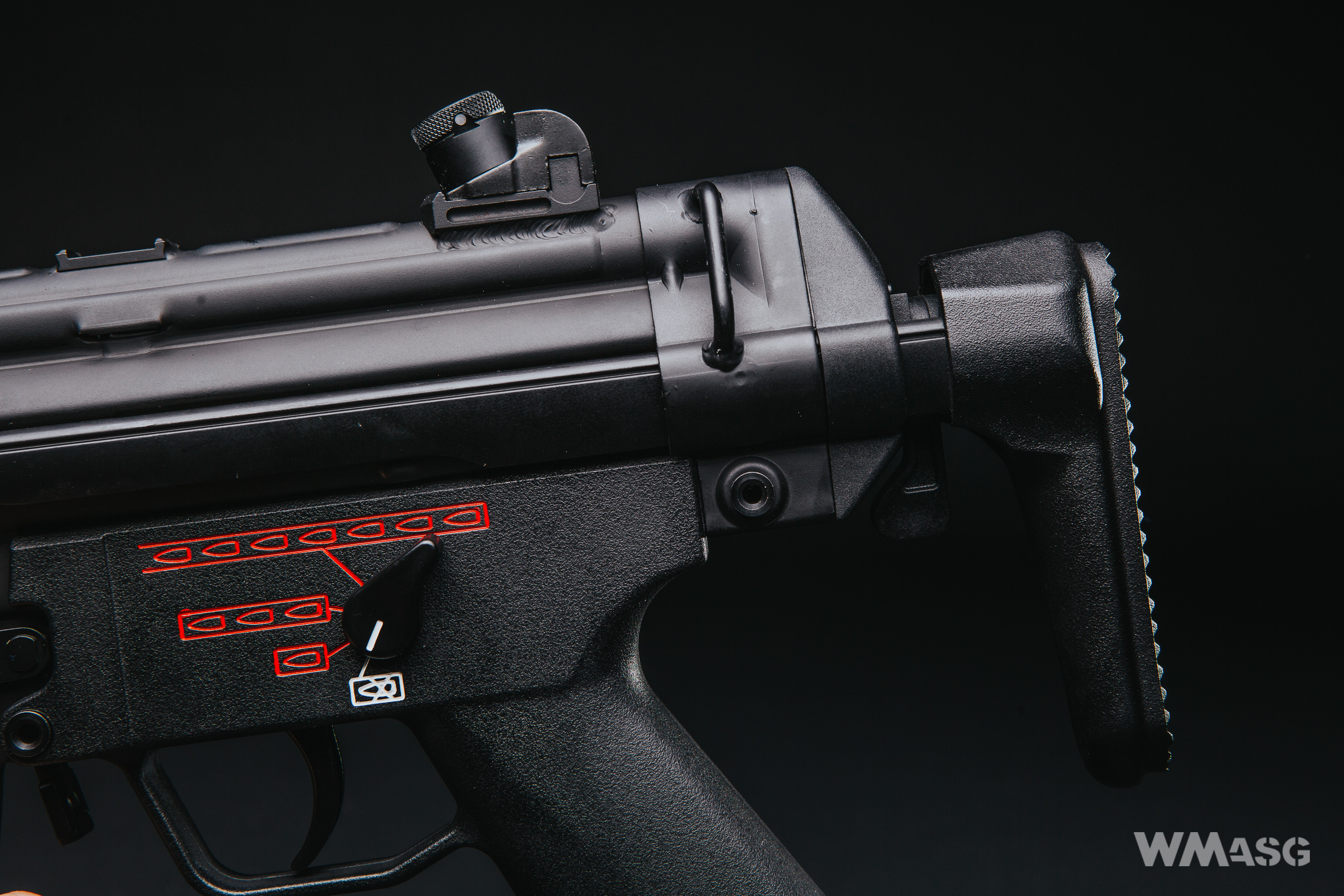
The stock can be set in 3 positions: completely collapsed, extended about 1/3 of the length of the guides and fully extended. In the last 2 positions it has a small slack which is in our opinion completely acceptable. The manufacturer's advertising materials mention that this part is a realistic steel retractable stock. However in our opinion, only the mount and ejection mechanism are made of steel as the release lever is made of hard plastic, and both guides look like aluminum alloy (ZnAl). Our test with a magnet was a complete failure, it was not attracted to them.
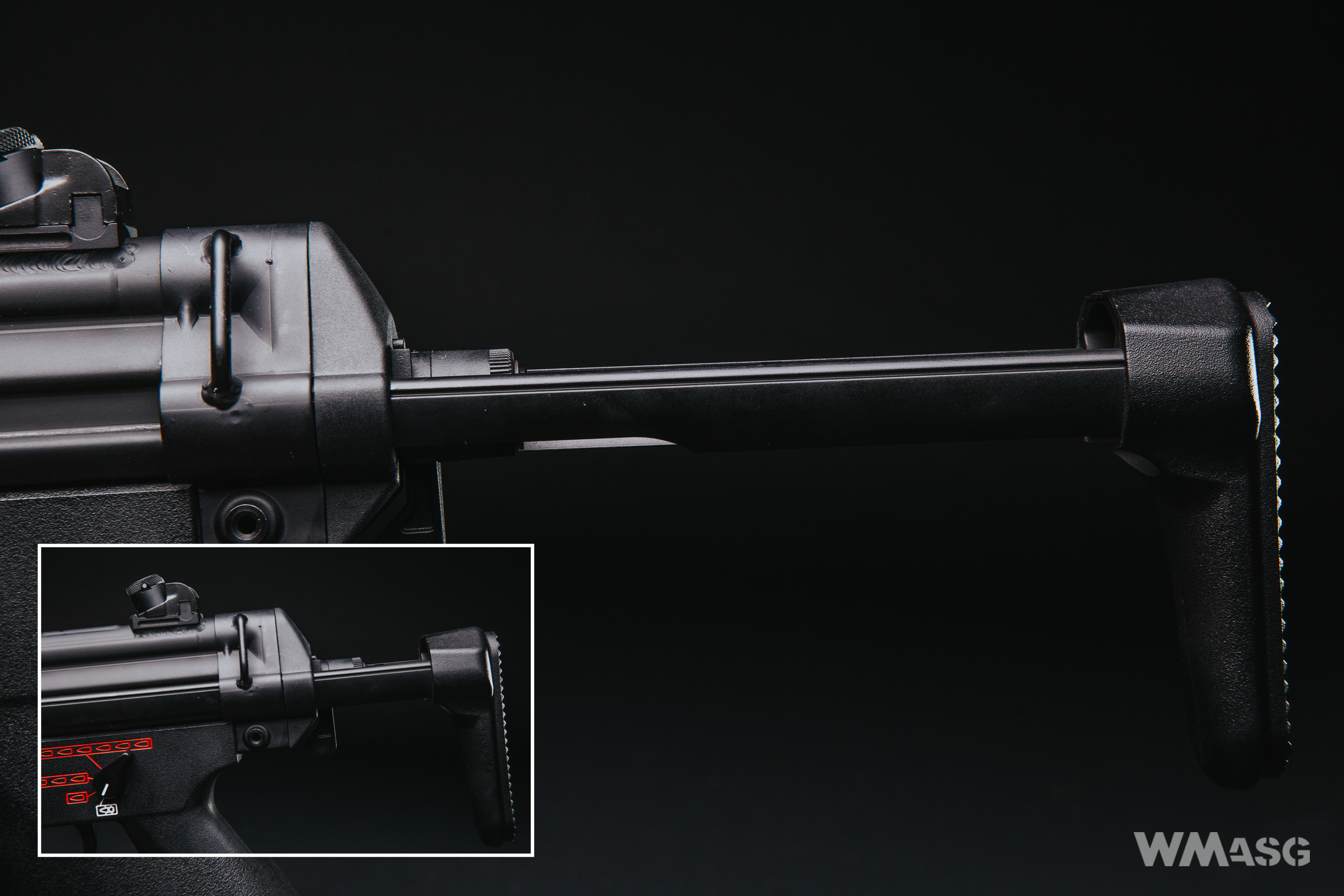
A shiny element can be seen in the small gap above the right safety/selector switch. It is a lever connected to the anti-reversal latch and is used to release the main spring. The gap is narrow therefore the lever can only be moved with a flat screwdriver or the tip of a small knife. To release the spring, the lever must be moved forward.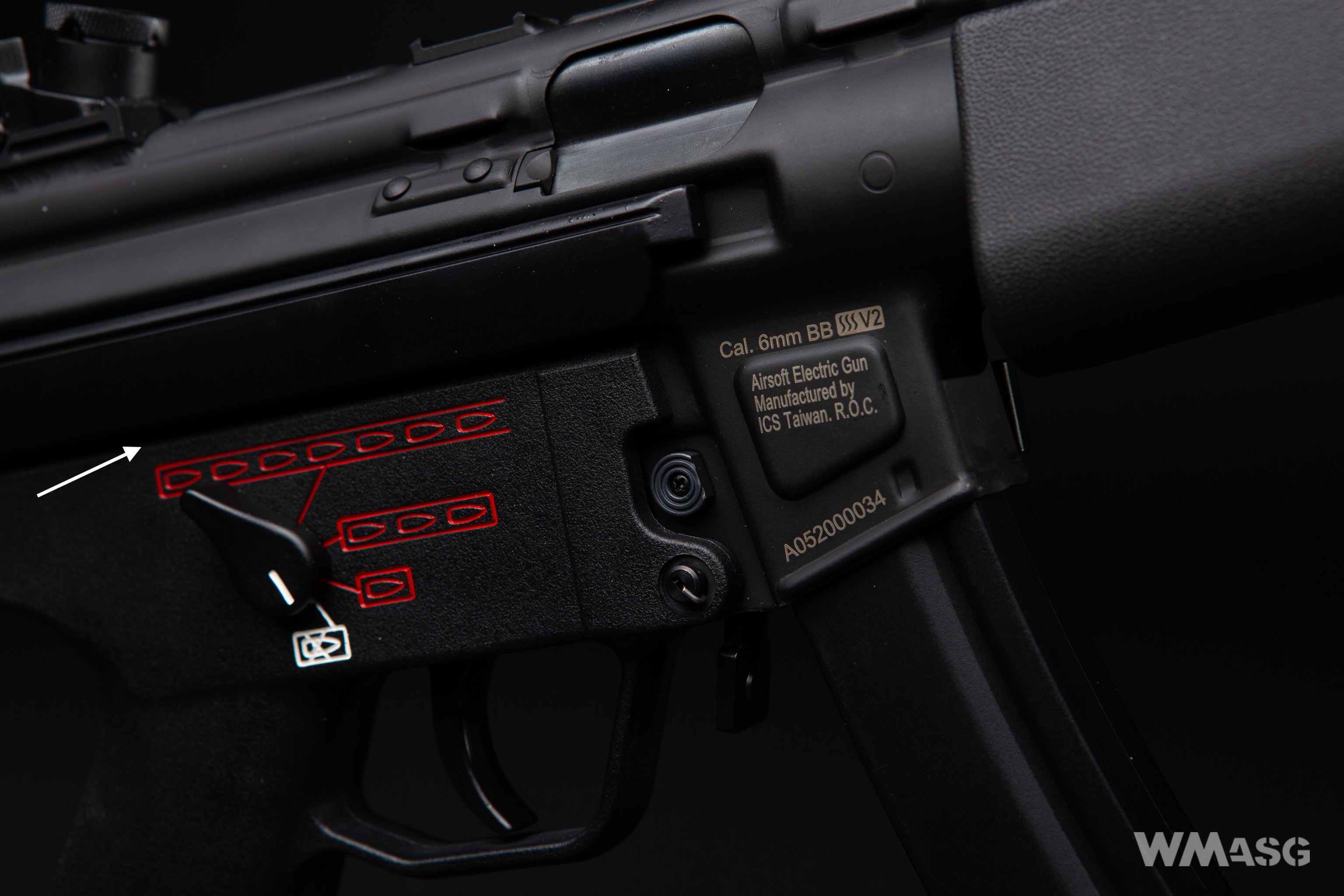
Changing the muzzle velocity/the quick spring change
ICS AR-15 system replicas equipped with a two-part gearbox are famous for their extremely easy method of changing the muzzle velocity. The same gearbox was also used in the CES-P, but due to design differences it is a bit more complicated. The first step is to release the spring so that the piston is in the extreme forward position. Next step is to remove the stock by removing the rear pin and sliding the mount together with the stock off the replica.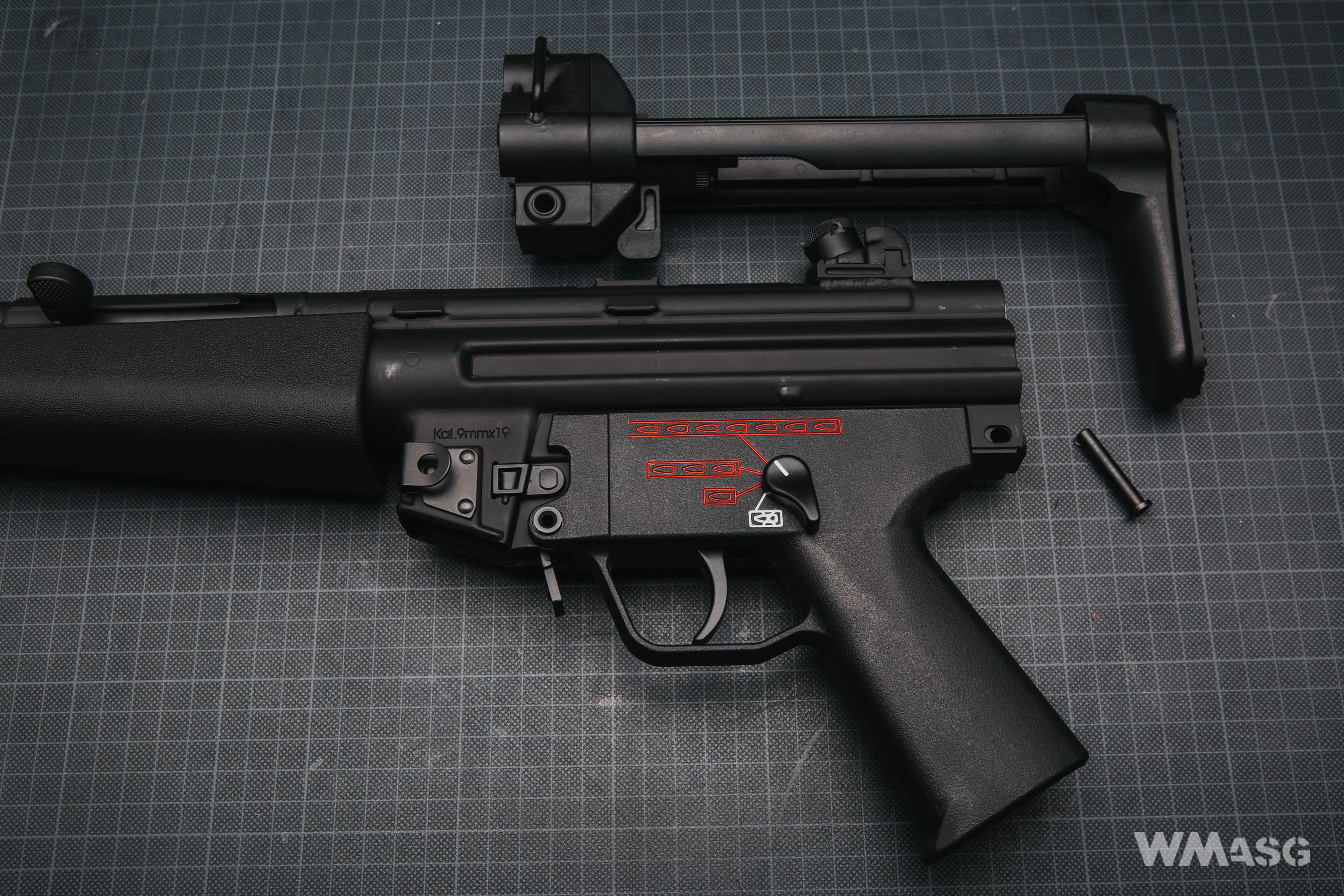
The next step is to "break" open the replica using the front pin connecting the receiver and the trigger housing like a hinge. All this can be done without any tools. For convenience, it is also worth removing the front pin and completely separate parts of the replica.
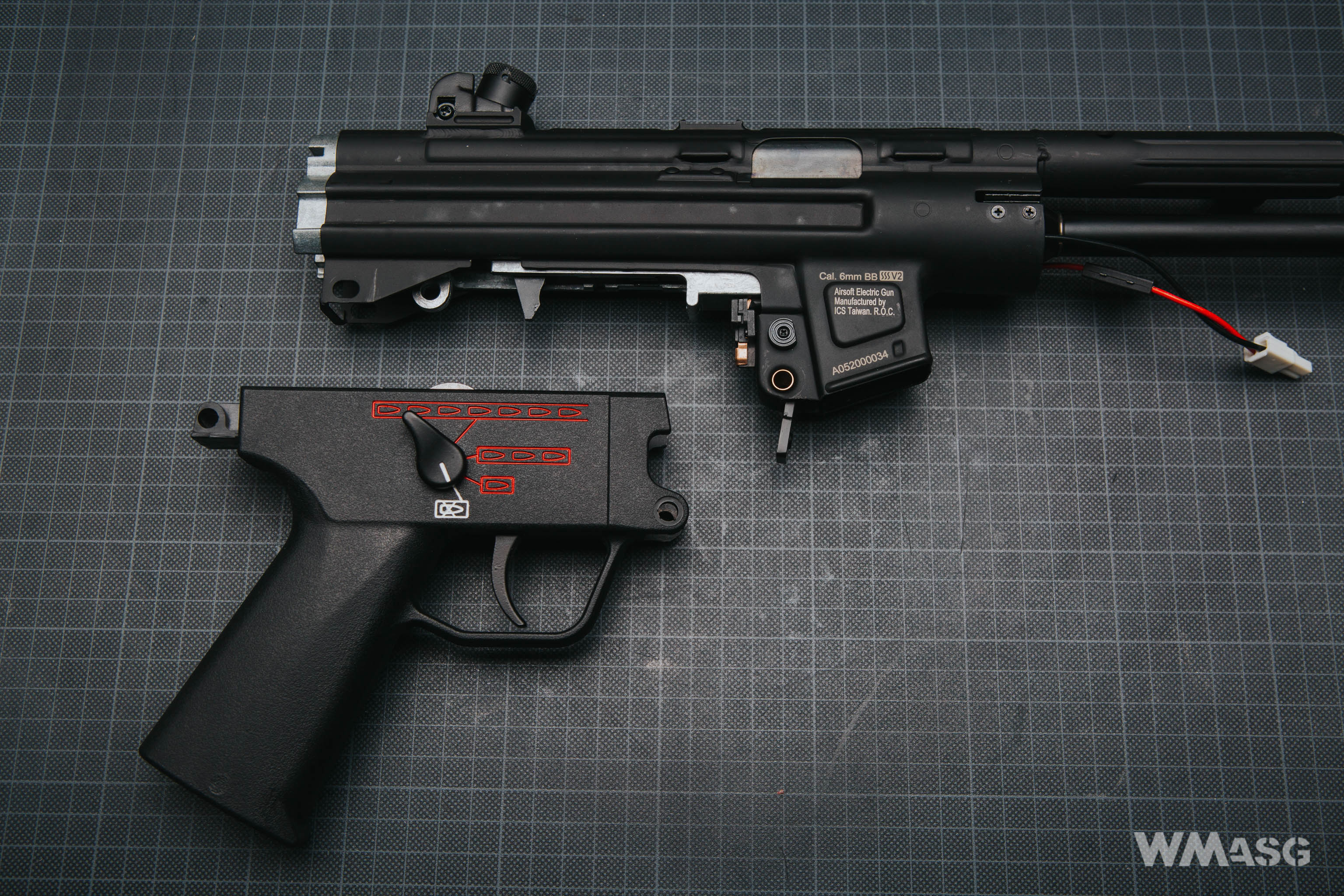
In the next step a 3 mm Allen key is required, which will be used to unscrew the ZnAl fitting stabilizing the upper part of the gearbox in the receiver.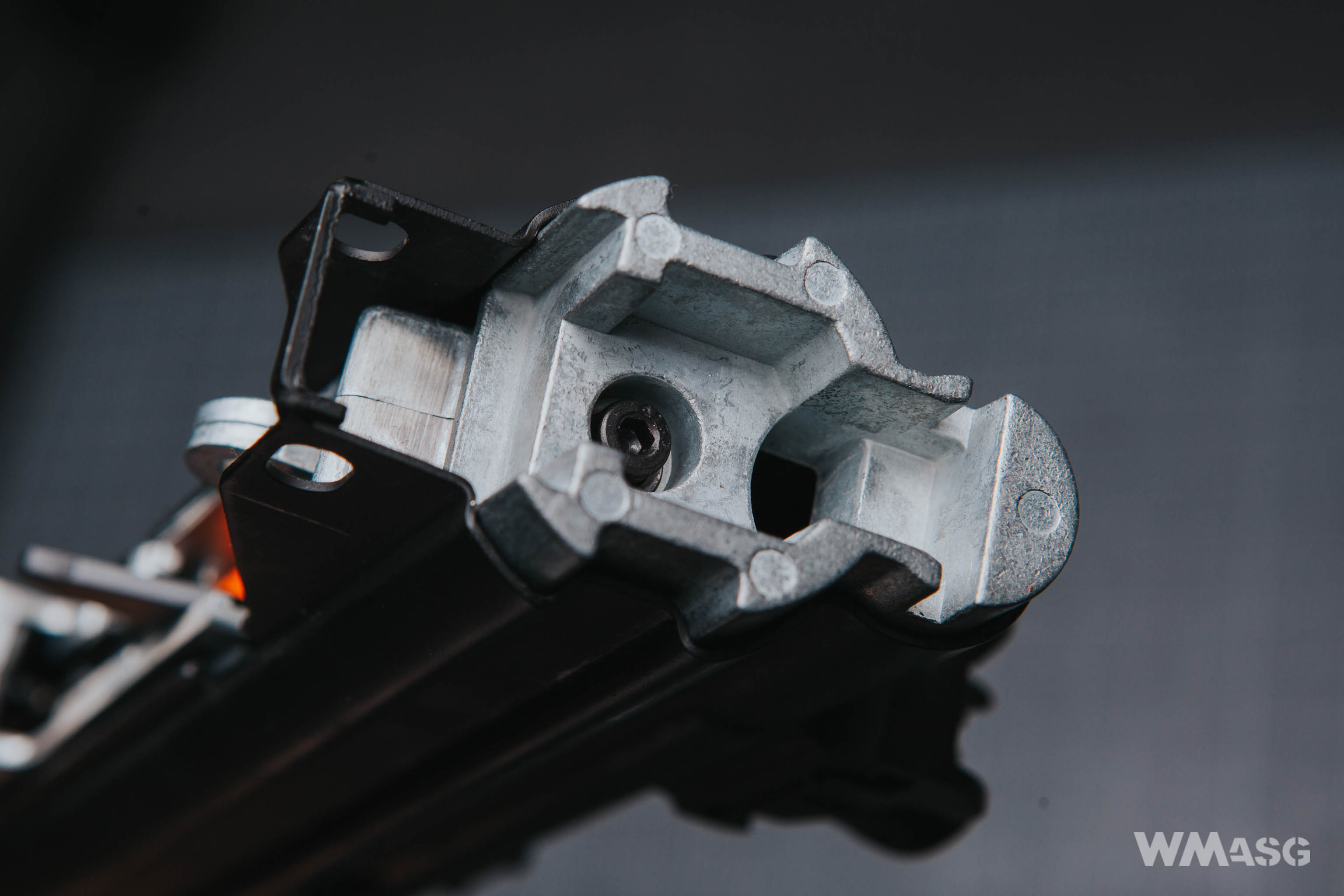
Only now you can turn and remove the spring guide with a 5mm Allen key (1/4 turn after pressing the screw slightly first).
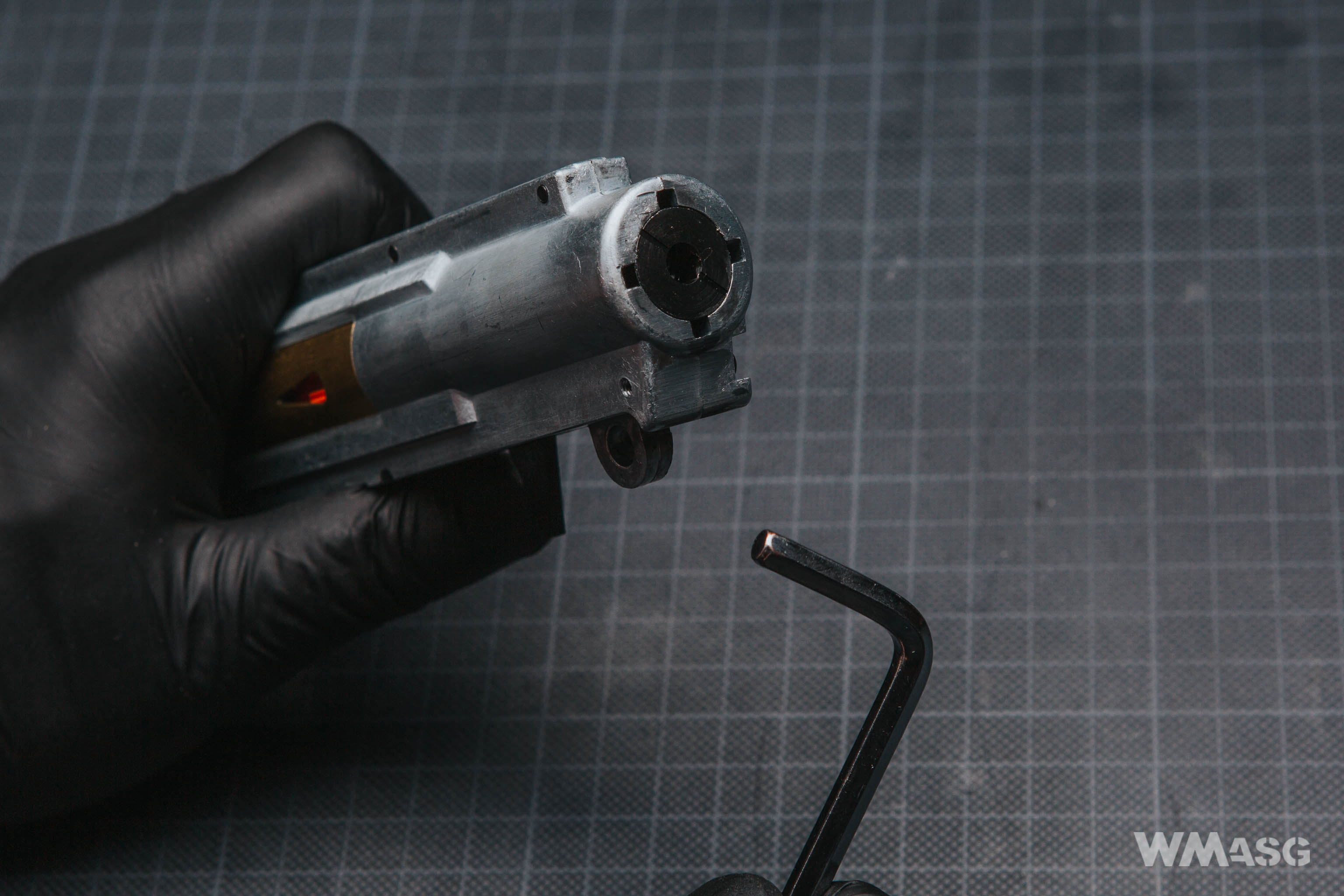
There is another possibility of a relatively simple and faster change of replica muzzle velocity. However, this requires a second complete "upper gearbox". Preferably also equipped a stabilizing fitting. Then the change is really fast and it can be done without using any tools. When sliding the upper part of the gearbox out of the receiver, you still need to pay attention to the tappet plate. The parts that hat works with the sector gear will not pass through the pin socket connecting the receiver with the trigger housing. When extracting the gearbox, the tappet plate should be bent slightly.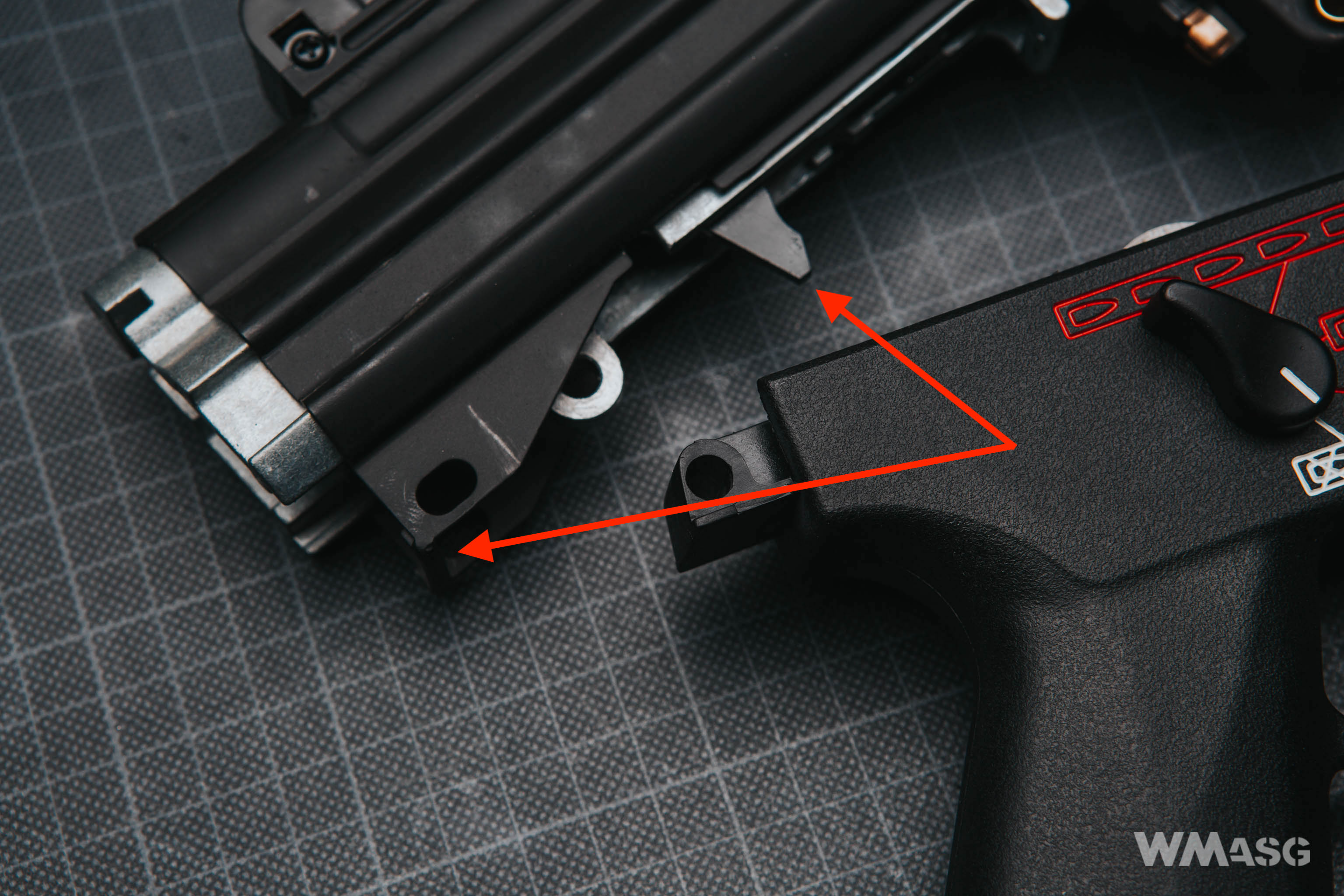
When closing the replica, remember to check the sector gear setting. Because, before opening the replica, the piston has been released, the gear must be set to match its position. The manufacturer recommends that this be the position "just before meshing with the piston". The first sector tooth of the sector gear should barely approach the edge of the trigger housing. If, when opening the replica, we did not release the piston, the gear must be set the same way as the piston moves forward after separating the receiver from the trigger housing anyway. Setting the sector gear's position must be done using fingers by rotating e.g. the spur gear as, after opening the replica, the battery current does not reach the trigger and neither the motor.
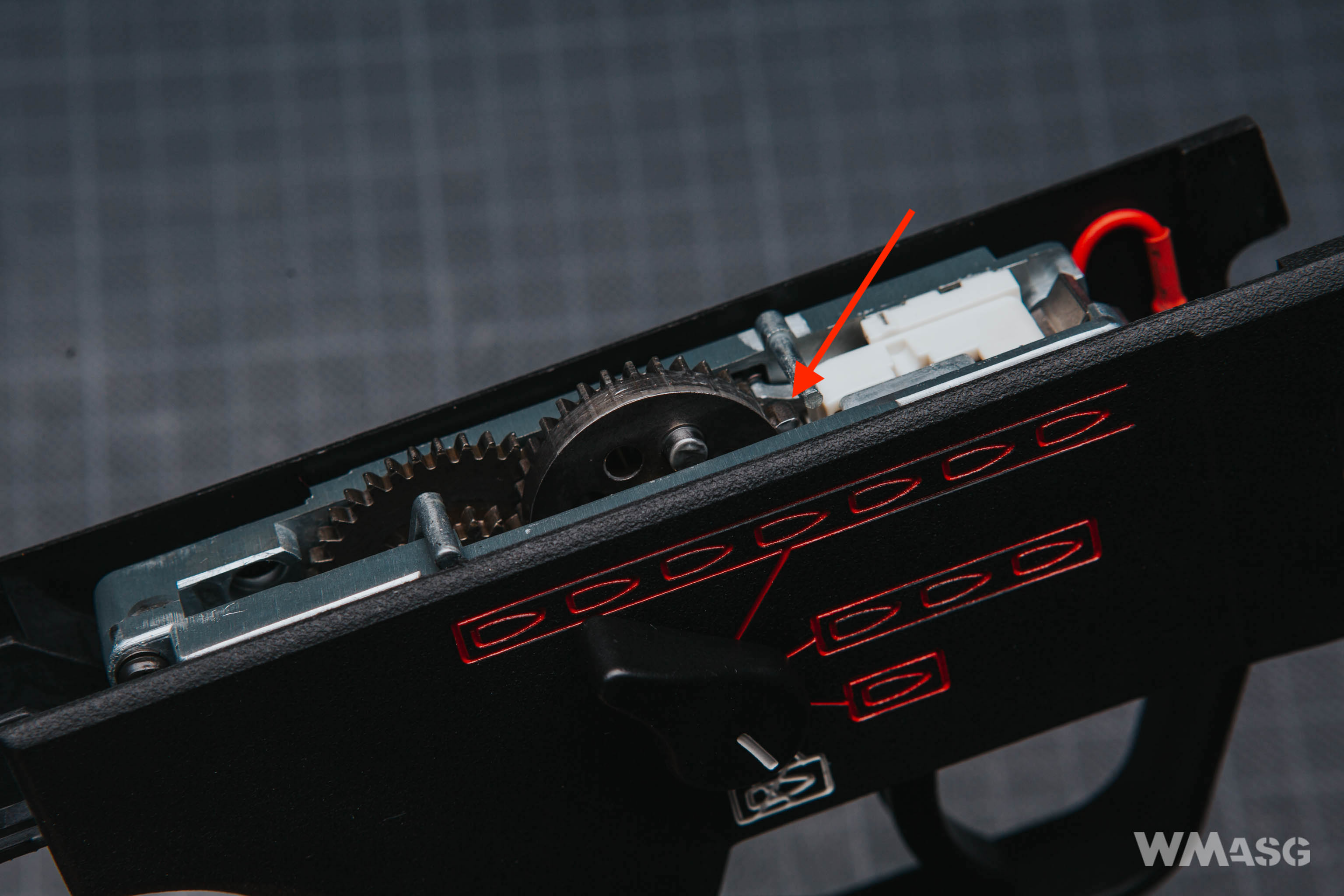
The mechanism
Most internal parts used in the CES-P are standard, but all of them are very well made and have high durability. The upper part of the gearbox, in which the parts of the pneumatic system operate, is typical for ICS replicas without the blowback (EBB) system.
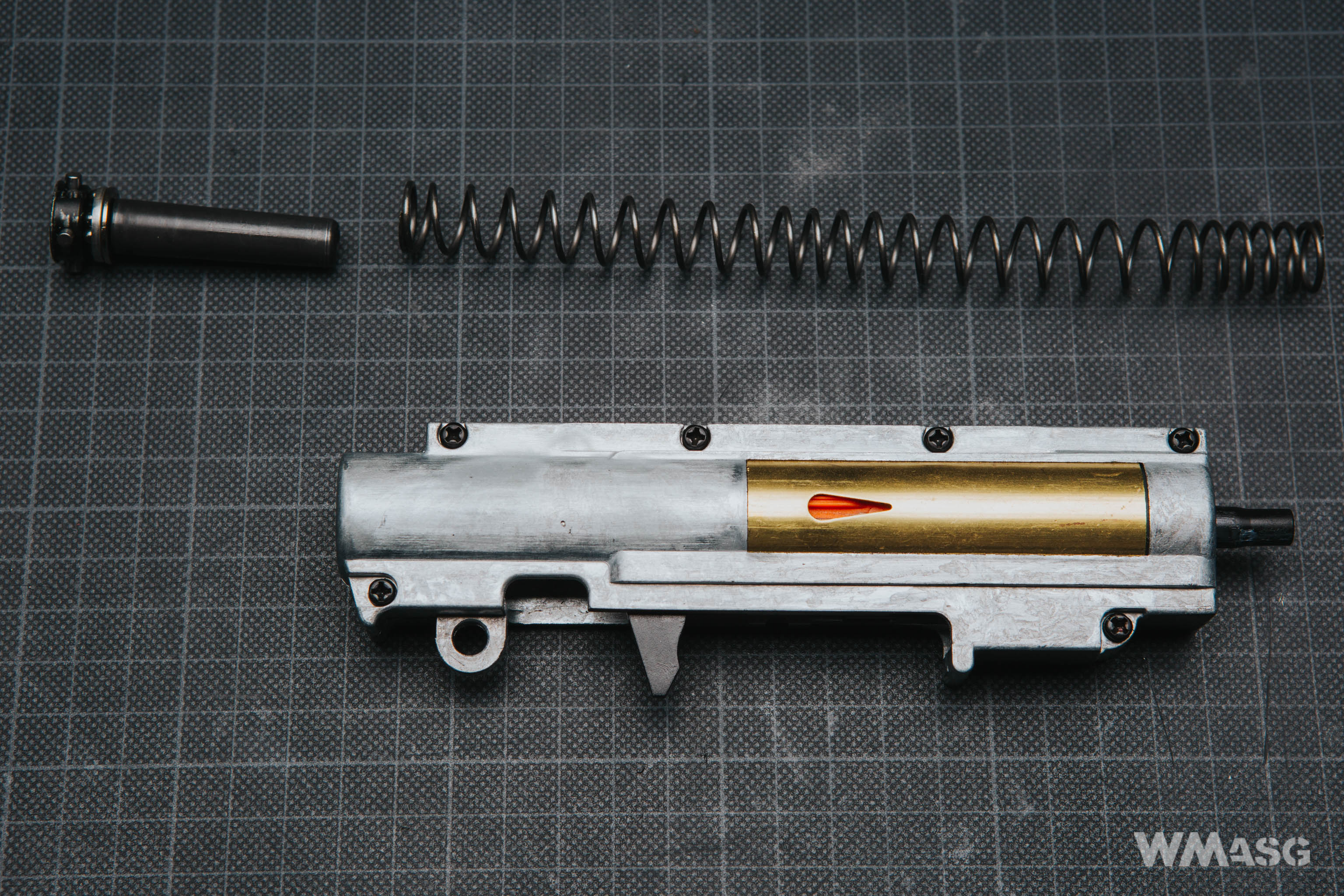
The polycarbonate piston has eight steel teeth. The spring guide and the polymer piston head have bearings. The nozzle is 21 mm long.
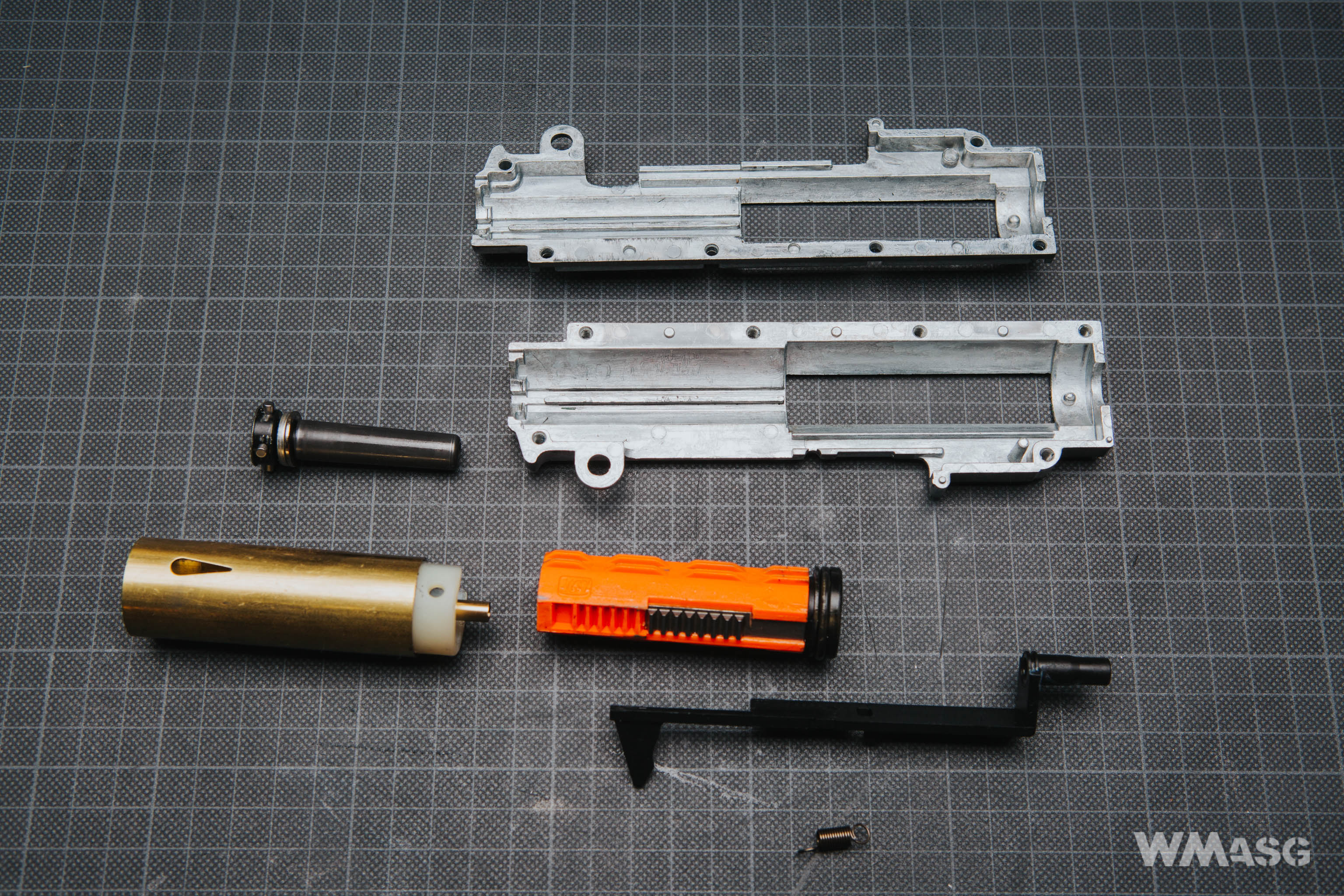
The lower part of the gearbox is a version adapted to the E-Trigger system, therefore it is not compatible with the one used in replicas with a traditional contact switch. An interesting fact is the use of a motor cage.
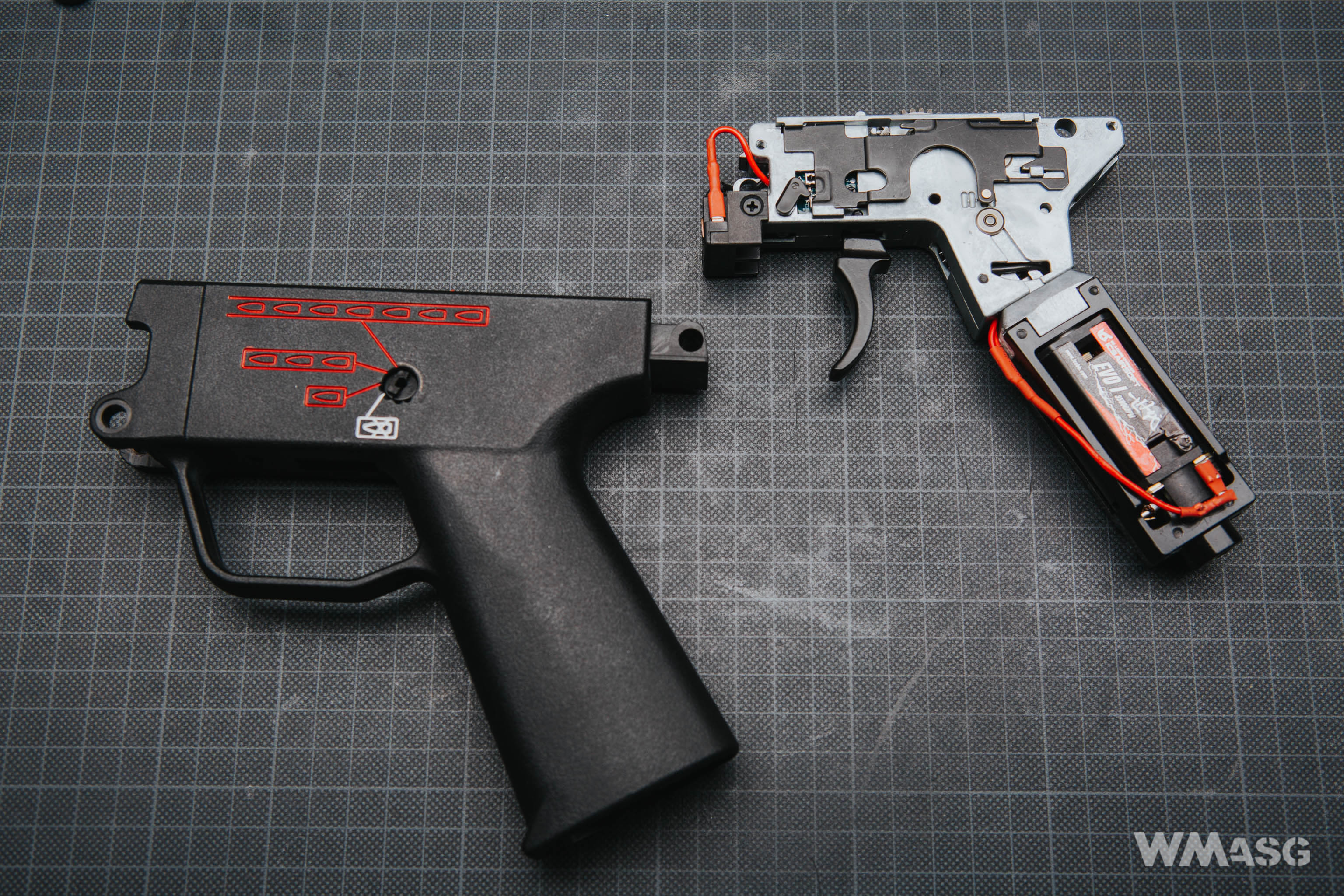
The internal components consist of steel (sintered) gears mounted on slide bearings, a dedicated trigger and, of course, the electronic module.
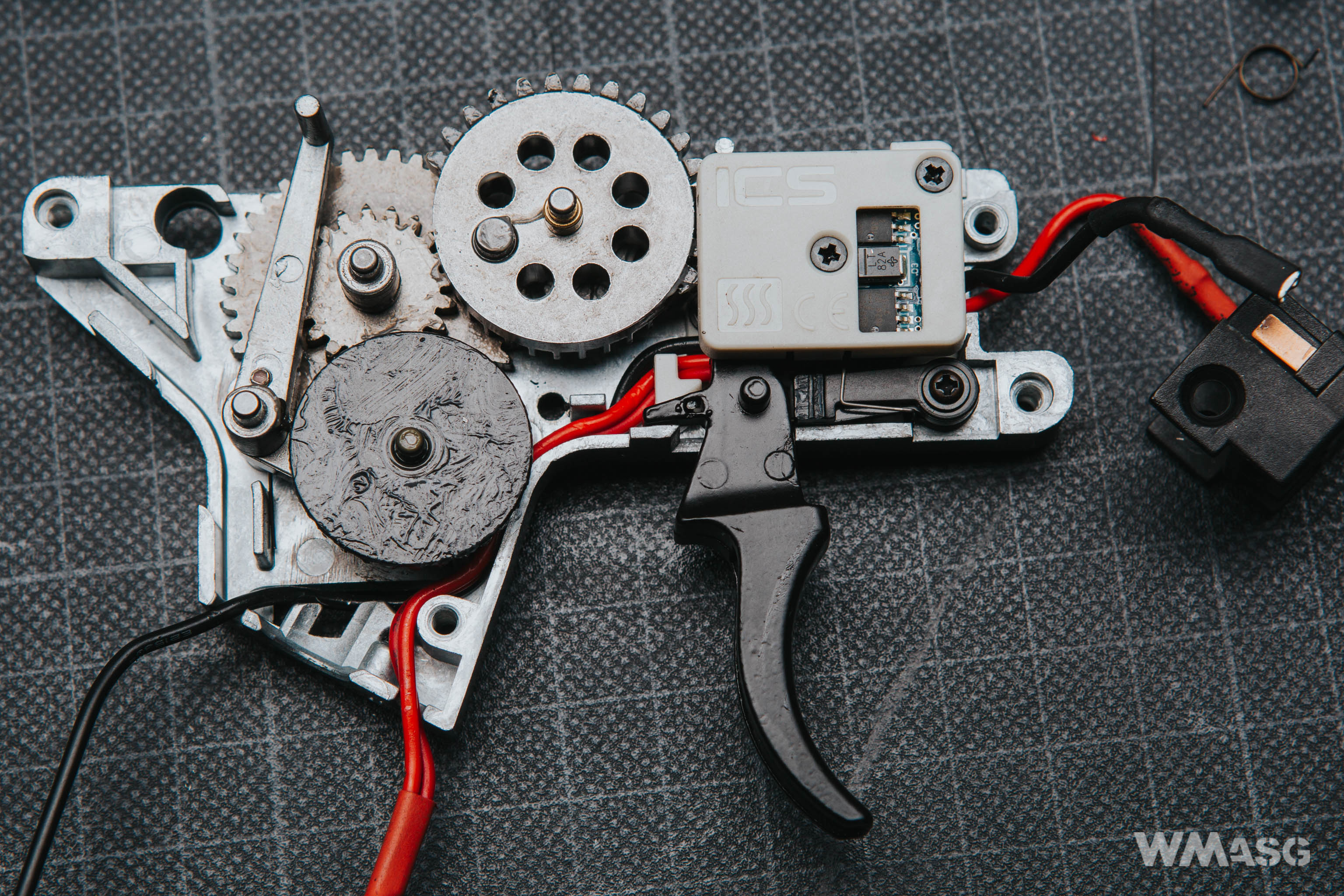
The system is controlled by mechanical microswitches. There are no optical or magnetic sensors. The first of the microswitches works with the trigger, which forced a change in its shape.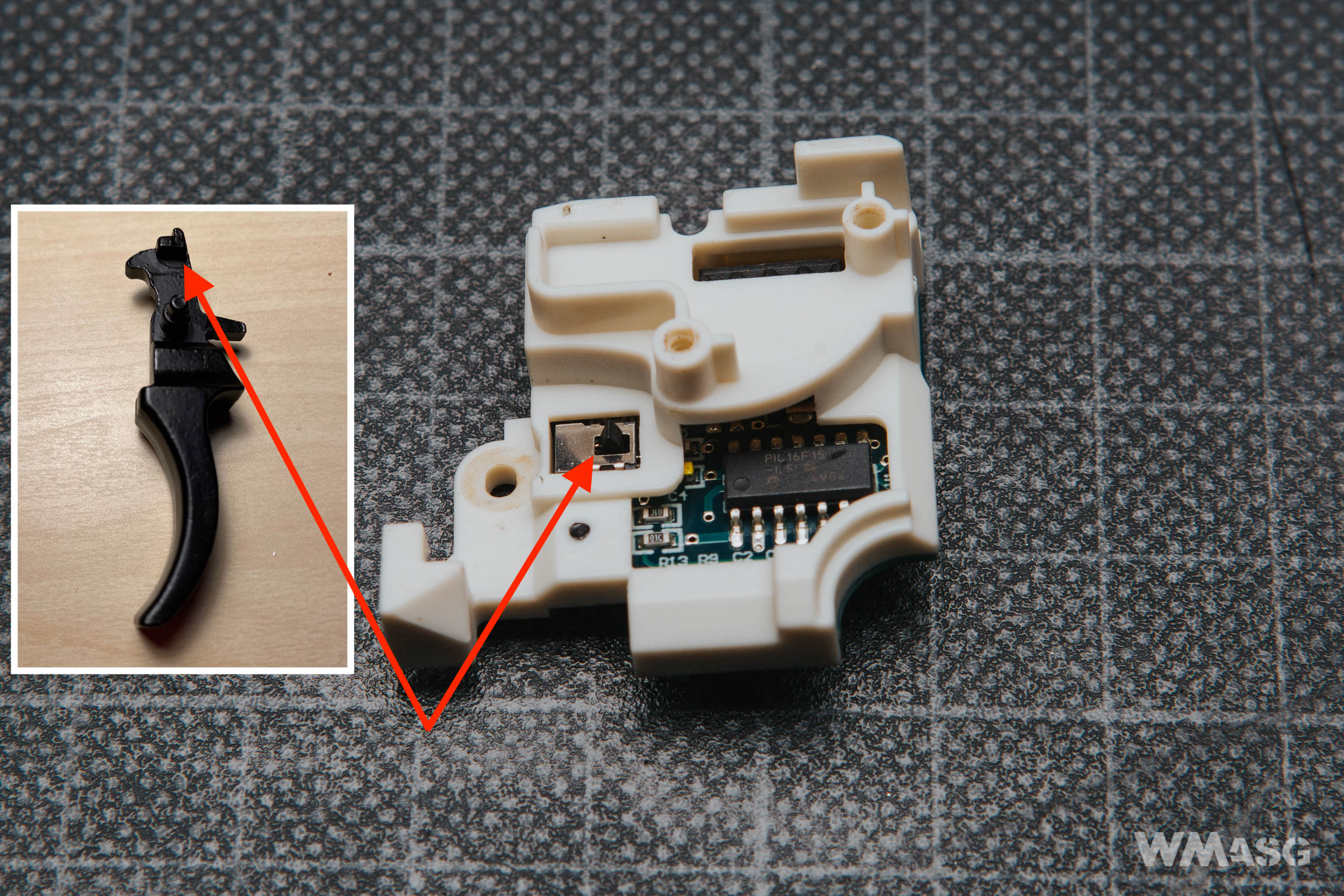
Another microswitch is activated by a classic cut of lever moved by a cam on the sector gear. The last two switches "detect" the position of the selector plate. And speaking of it, the plate is dedicated and made of steel. Interestingly, it took over the function of making the "click" sound when individual settings of the safety/selector switch are changed. Special grooves in the left half of the gearbox are responsible for this.
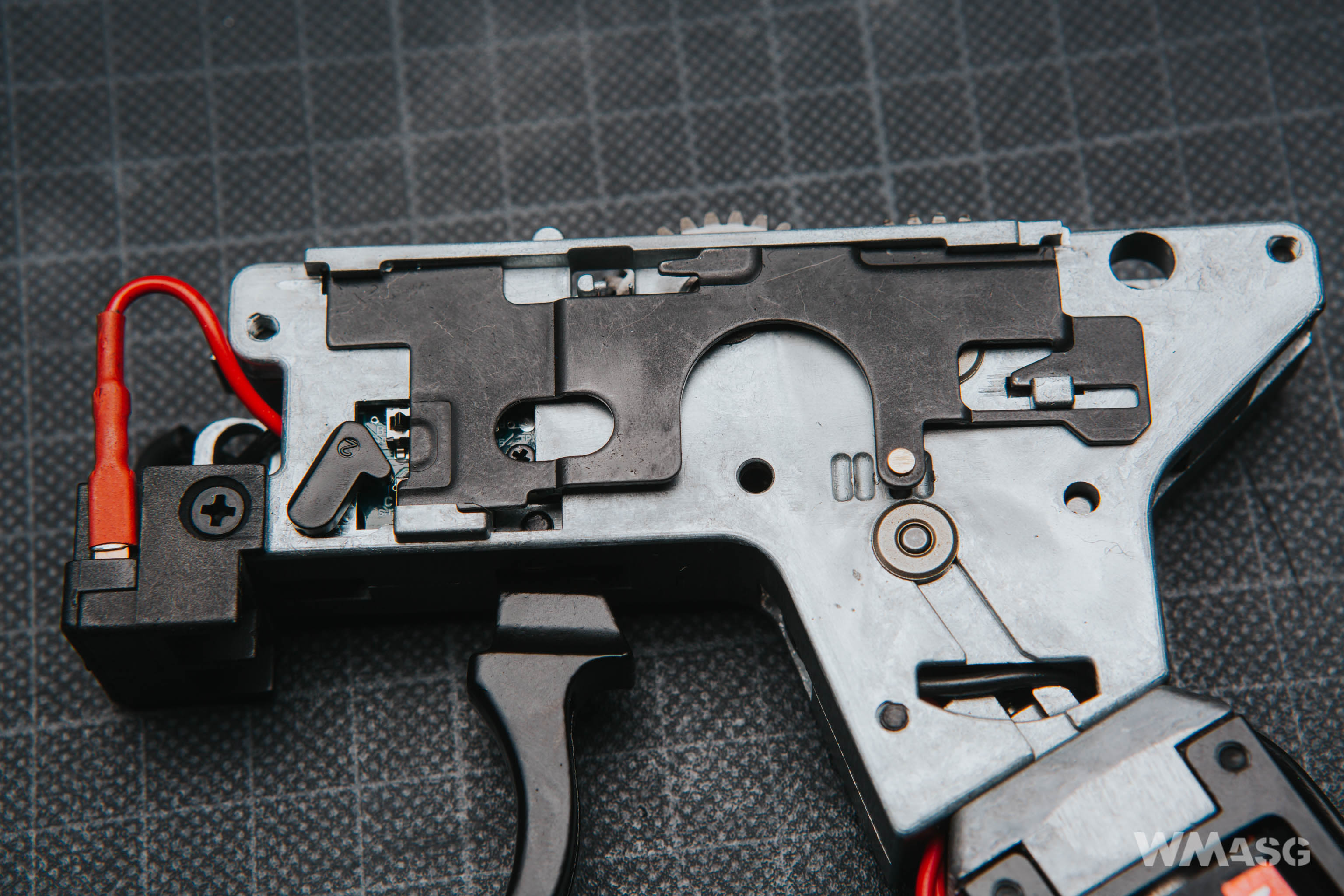
The gearbox is driven by a long Evo motor with a nominal speed of 35,000 rpm.
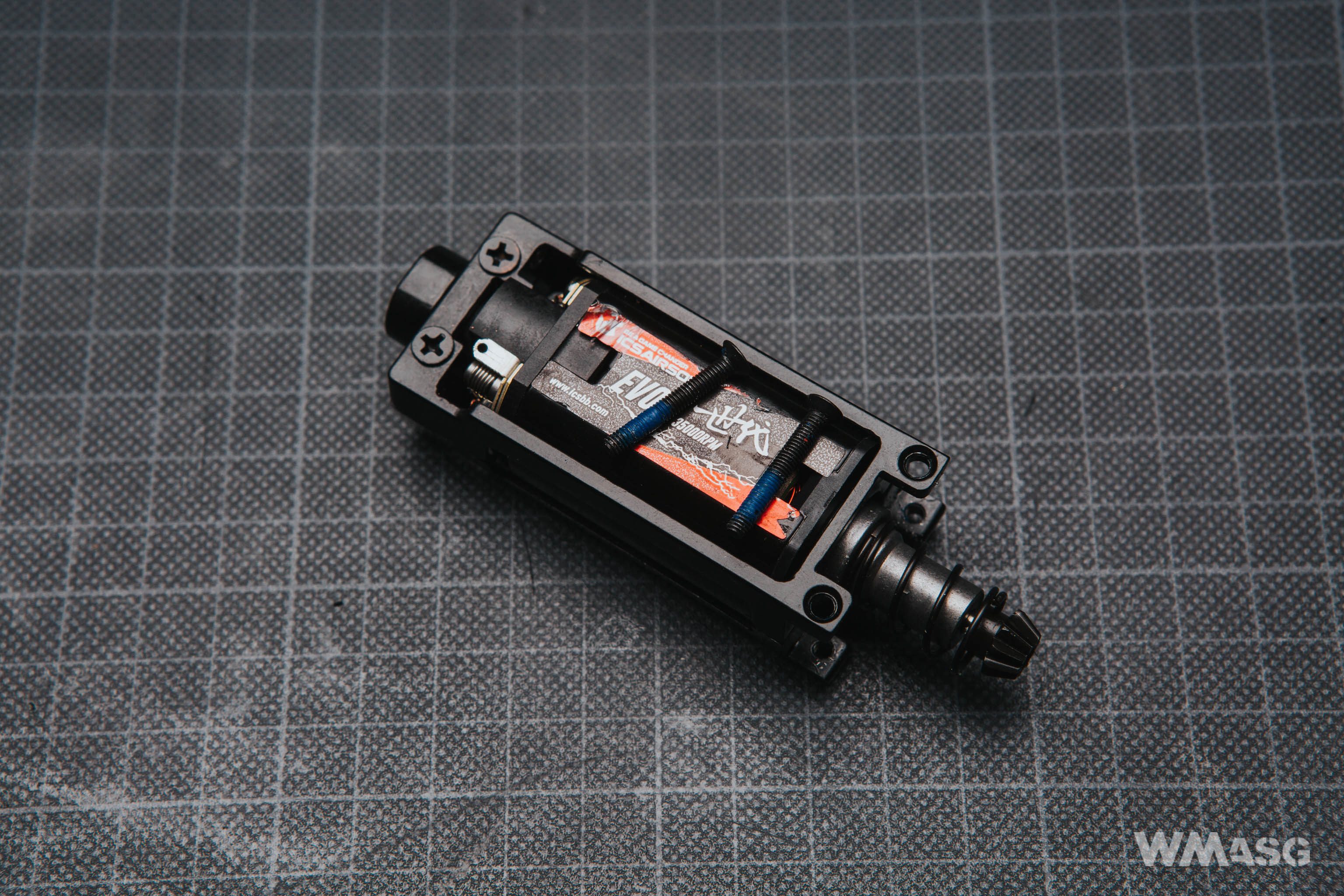
Shooting
There is nothing new to be said about the ergonomics of the MP%. What drew our attention was the slightly rugged texture of the grip and the handguard, as well as the noticeable stiffness of the entire structure, facilitating the operation of the replica. After locking the dummy bolt carrier in the rear position, access to the Hop-Up chamber is convenient, and the very adjustment, done with the use the slider, is very precise.
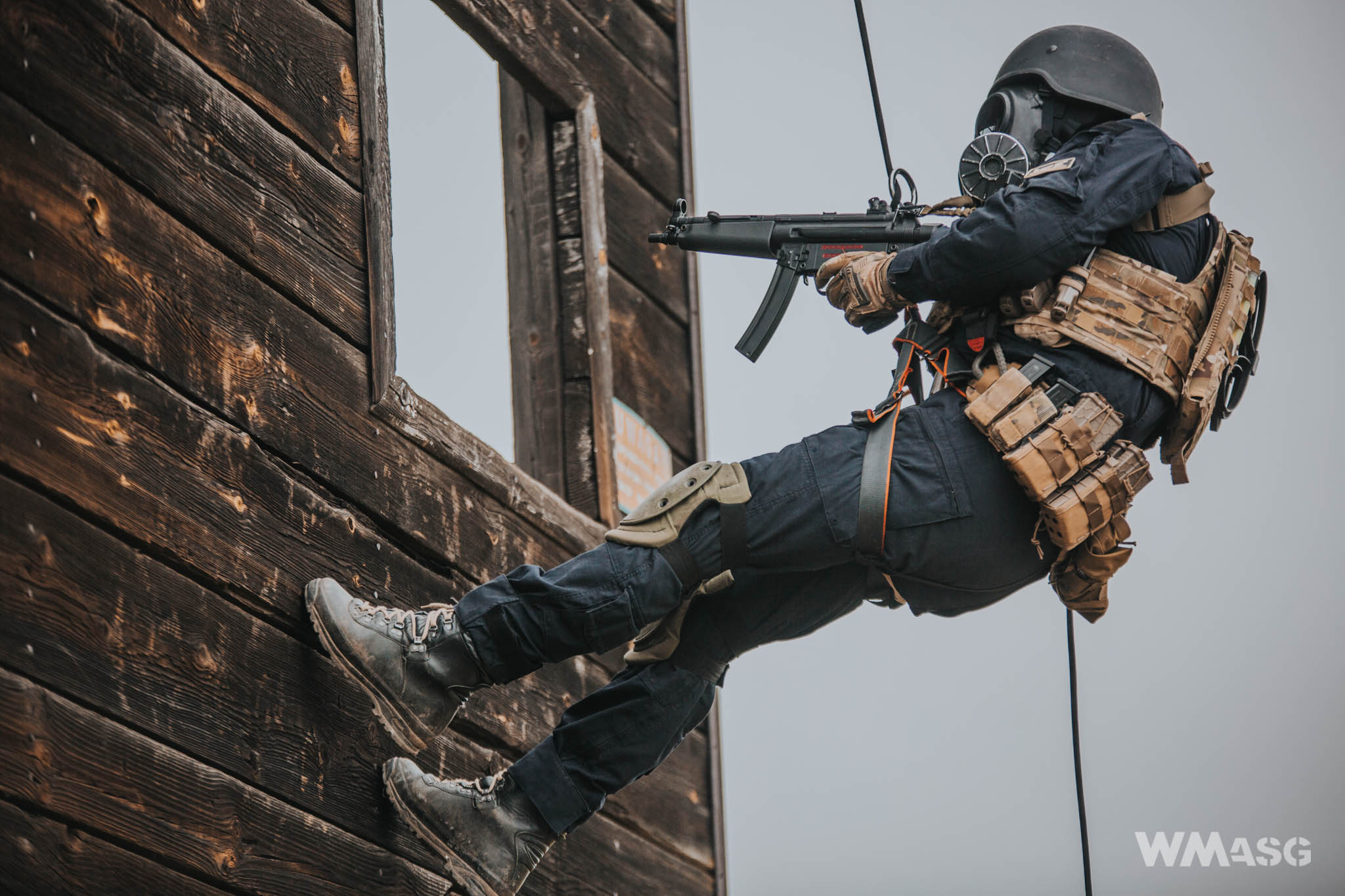
The mechanism works smoothly and without unpleasant sounds, but tuners will certainly be able to improve the alignment of the gears (shimming). The overall range is typical for an airtight and properly assembled replica with a similar muzzle velocity. In this respect, the replica does not stand out. On the other hand, the trigger work is noteworthy. Its stroke is clearly shorter than in the case of replicas with ordinary contact switches. However, we did not notice the work of the pre-cocking feature.
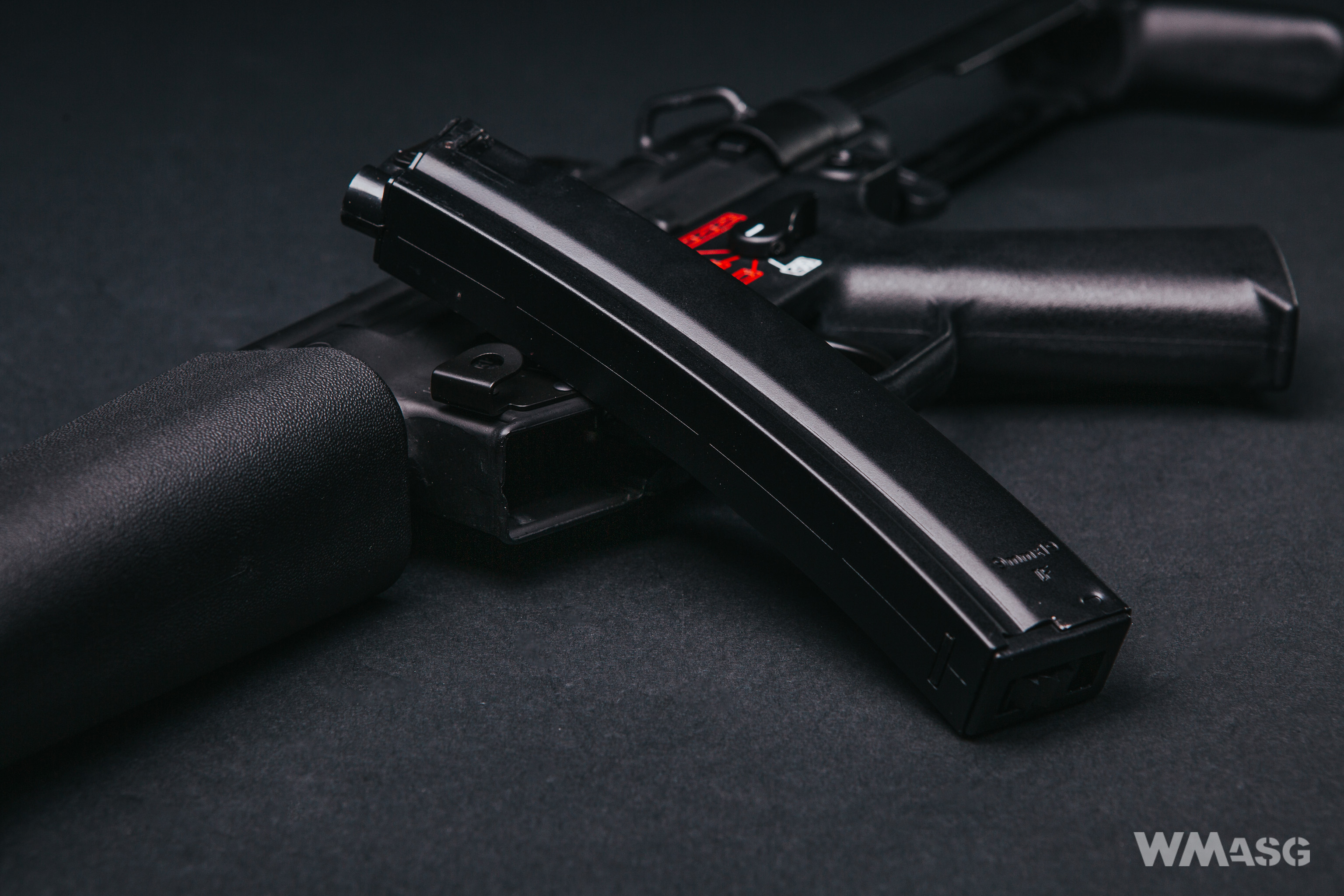
Muzzle velocity measurement
Open Blaster 0.2 g BBs
1. 398.2
2. 385.0
3. 395.2
4. 399.1
5. 400.1
6. 404.2
7. 398.6
8. 398.6
9. 393.8
10. 401.1
Average: 397,4 fps. Spread: 19,2 fps - which is a lot.
The rate of fire using an 11.1V 1200mAh battery was 17.7 rps. Using a similar capacity battery but with a voltage of 7.4V the result was 14 rps.
Target shooting test
Shooting range closed, 0.25 g G&G BBs, Hop-Up was pre-set, distance to the target - 25 m.
Single fire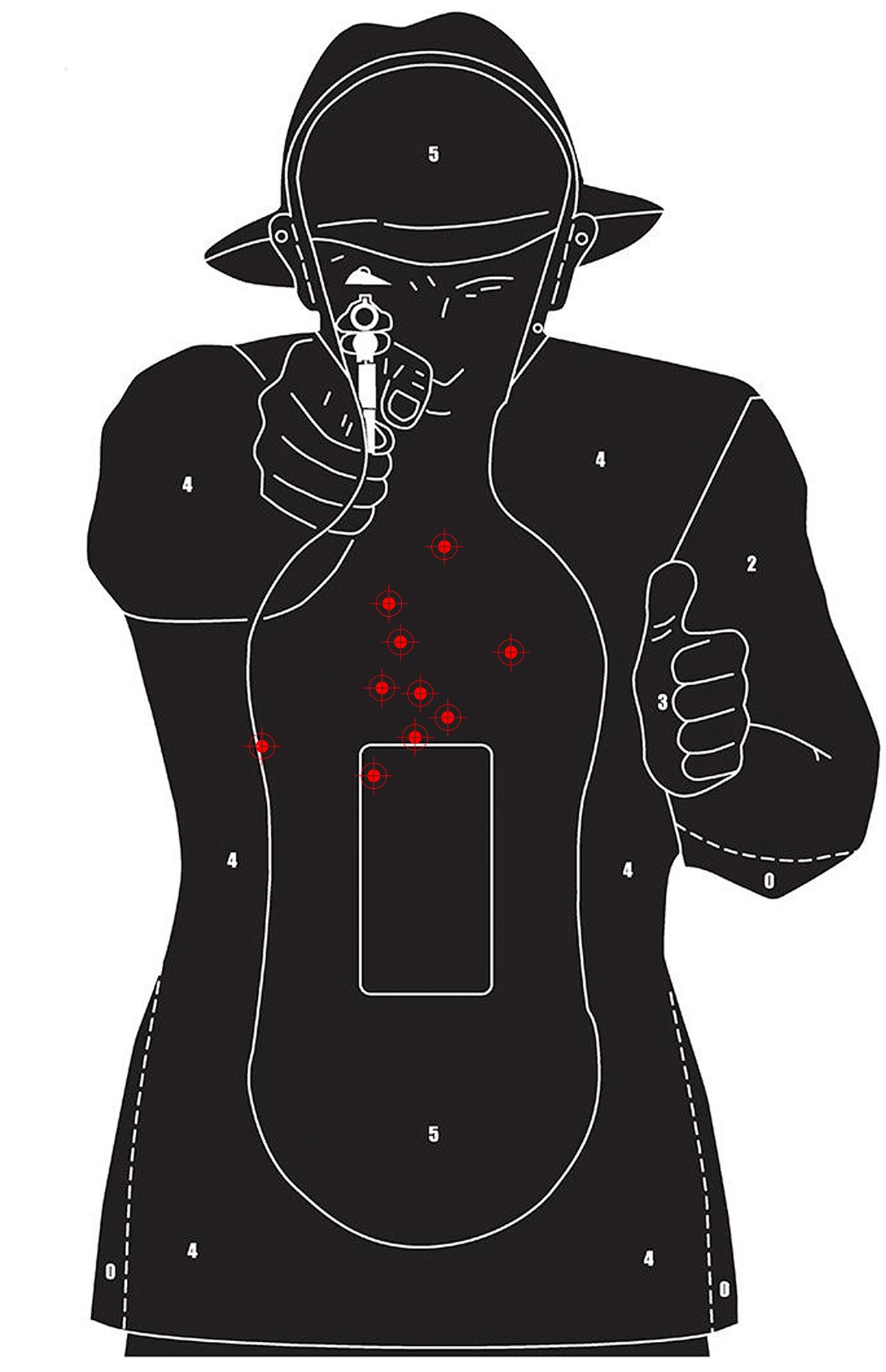
Full-auto
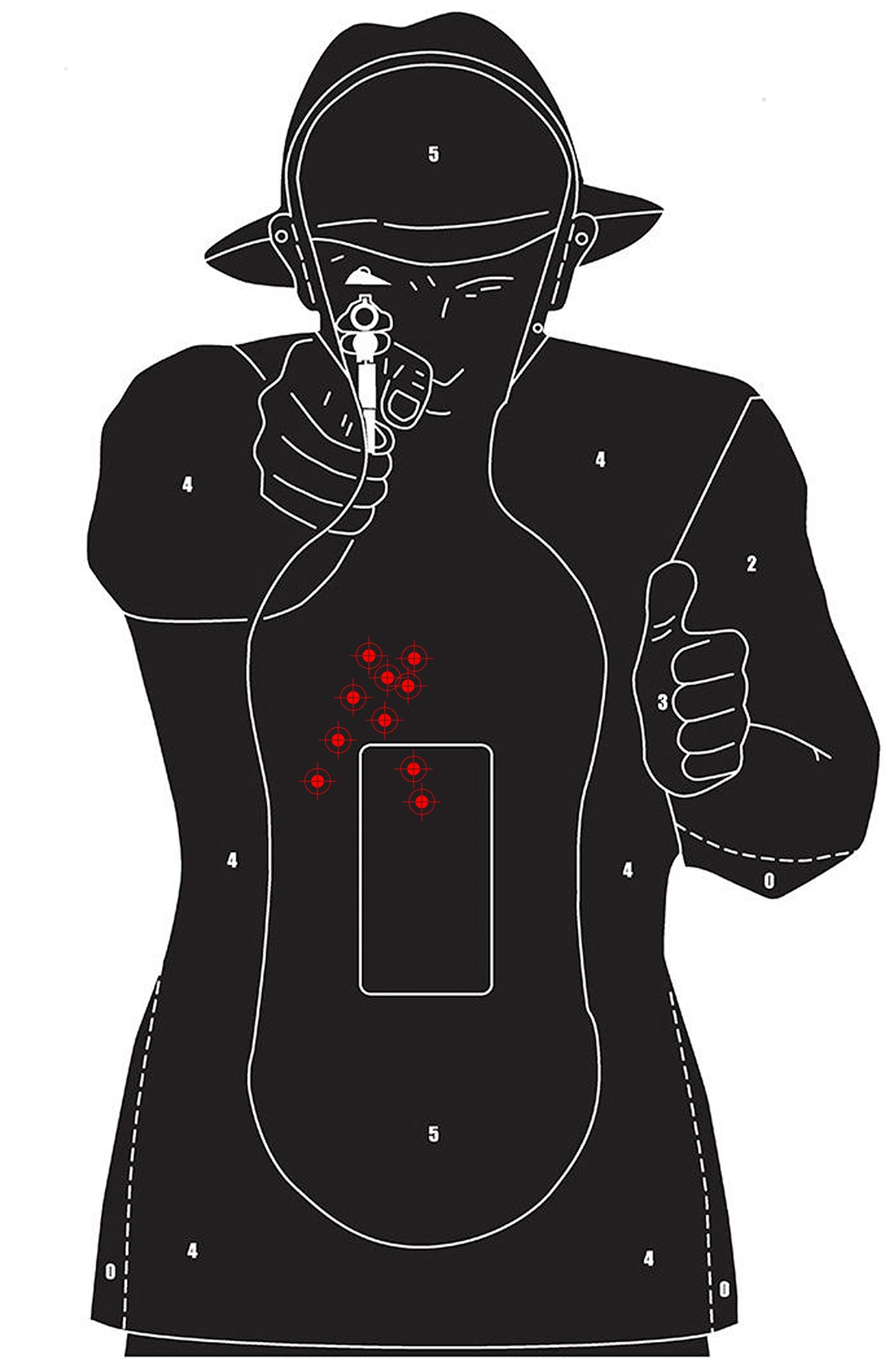
Summary
I have to admit that we were very eager to test the steel MP5 with three fire modes when we first heard news about it. We expected a new opening and a return of a fashion for owning an MP5. Meanwhile, the CES-P is a very decent and probably also a successful replica (which, however, will be known after a long presence on the market), but it is not a new opening. Of course, people who want to buy an MP5 replica today and have a slightly larger budget should definitely think about it. Some of its features or functionalities are unique and none of the other manufacturers have them in their replicas. However, we were expecting something else - a completely new all-steel MP5.
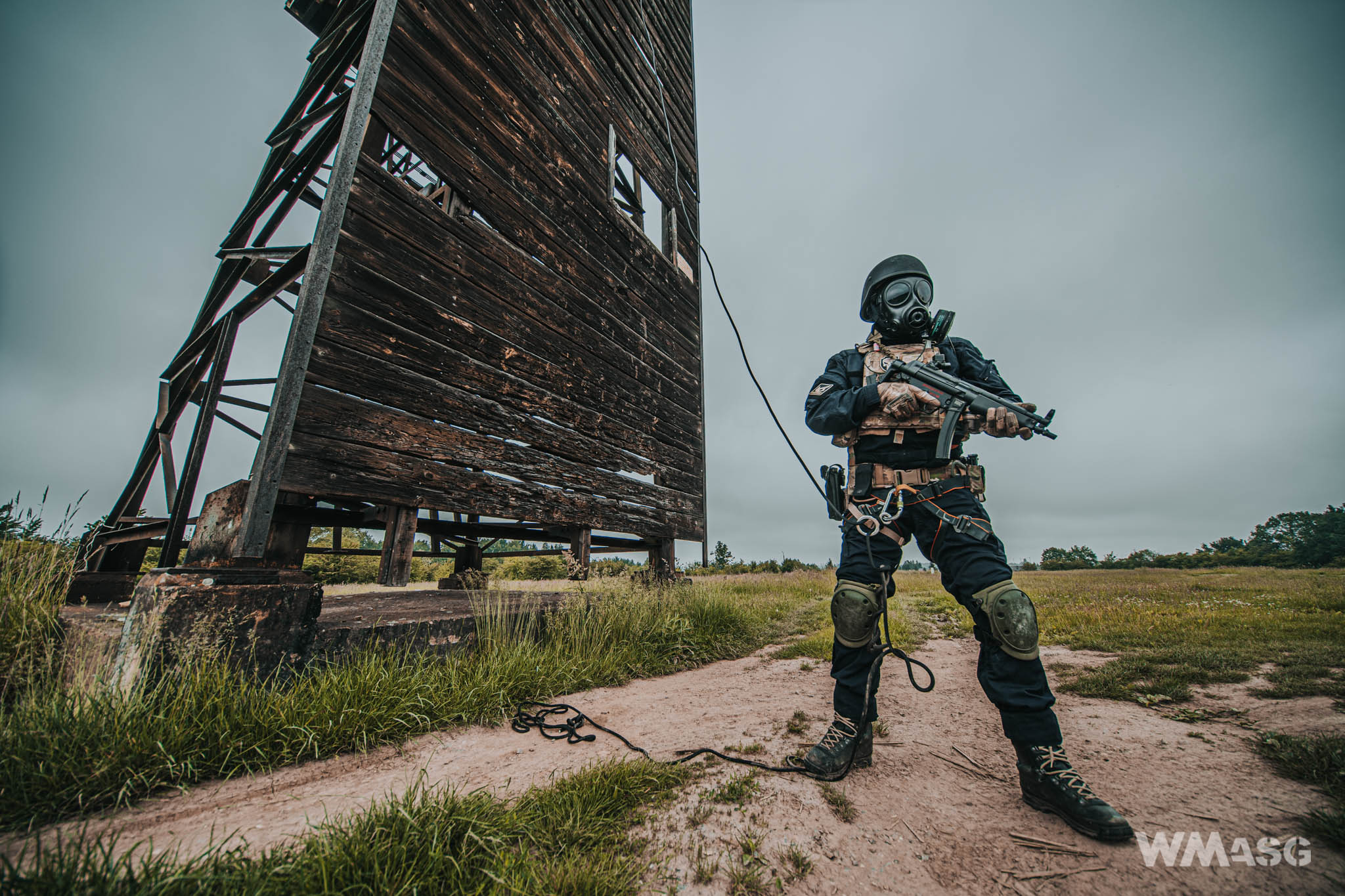
We were able to test the replica thank to the courtesy of ICS Airsoft
On the next page - technical details

